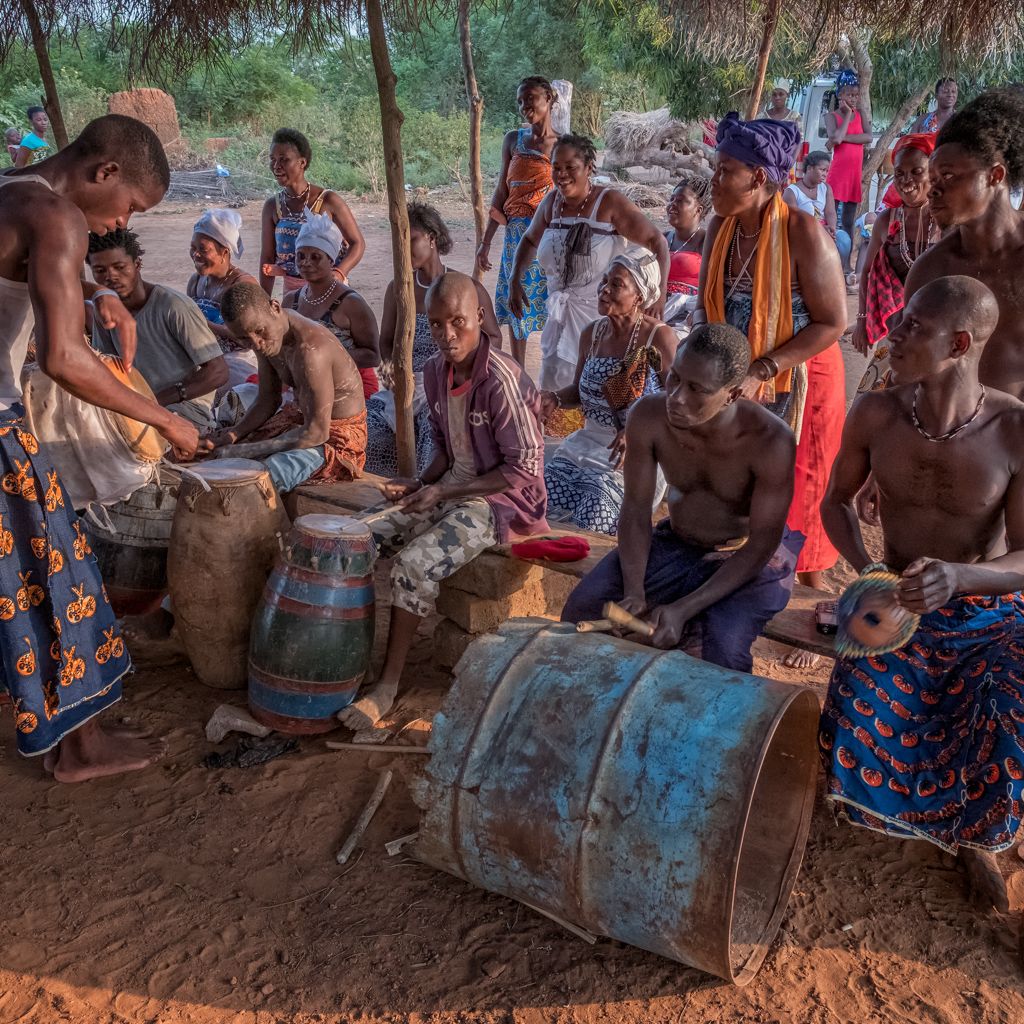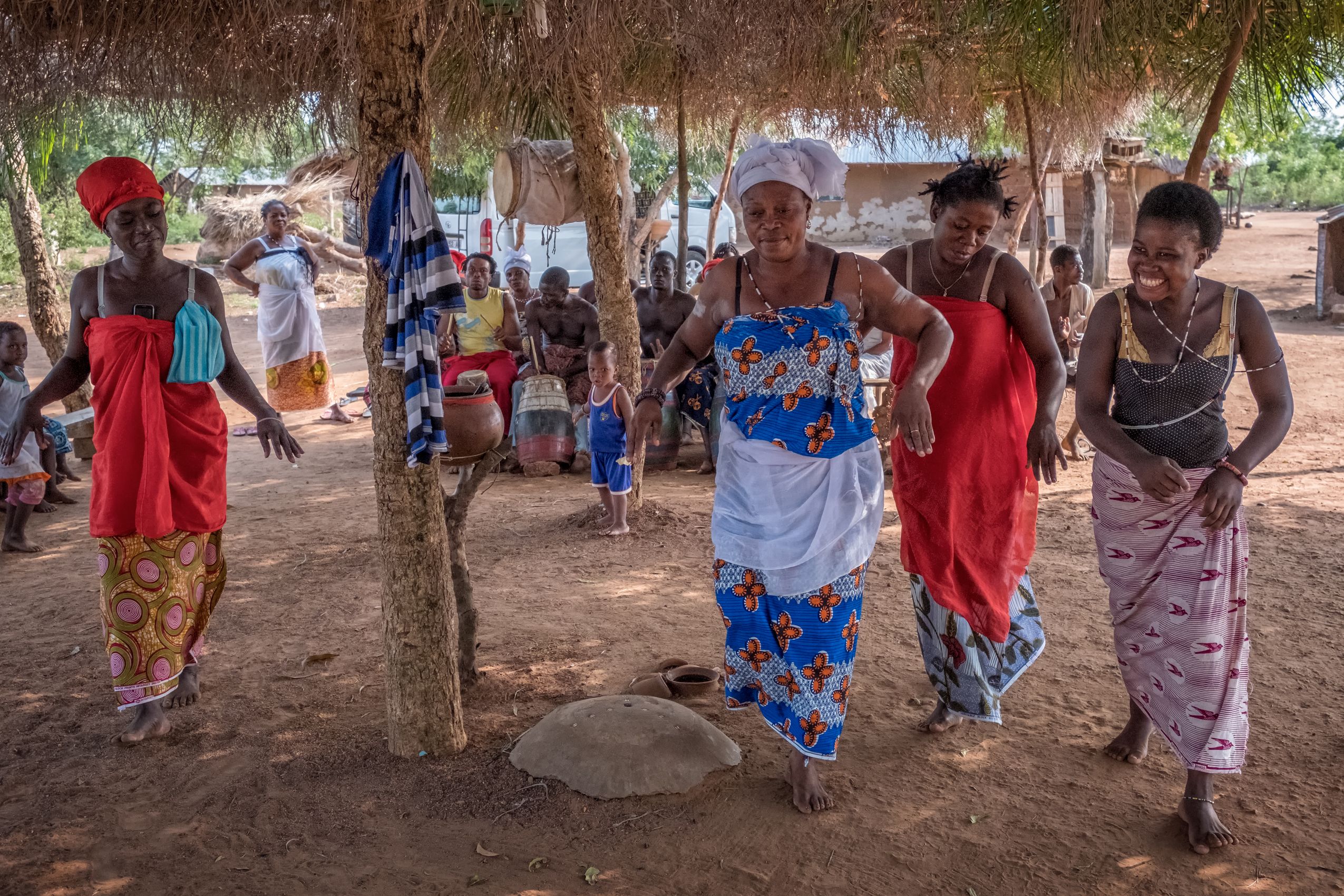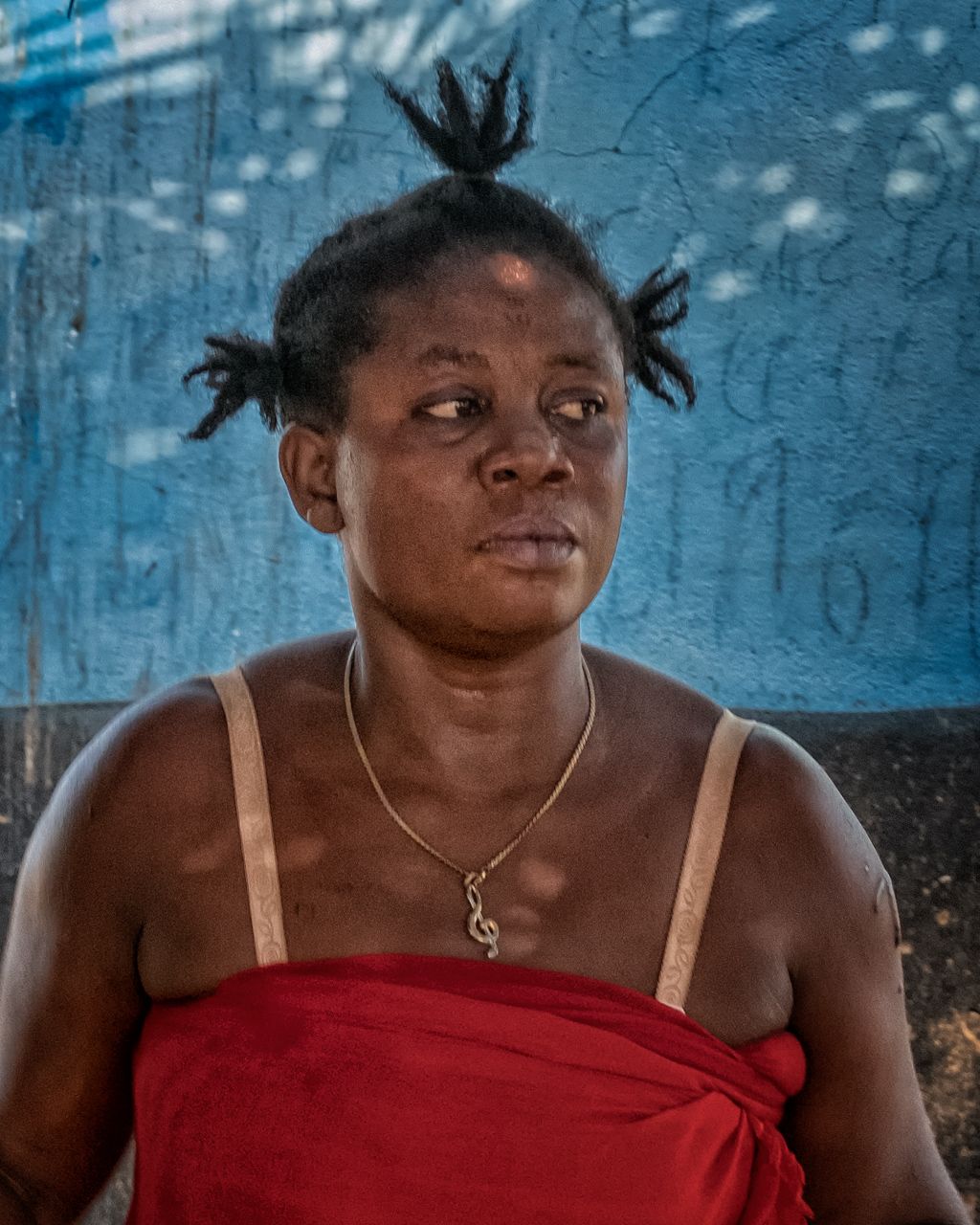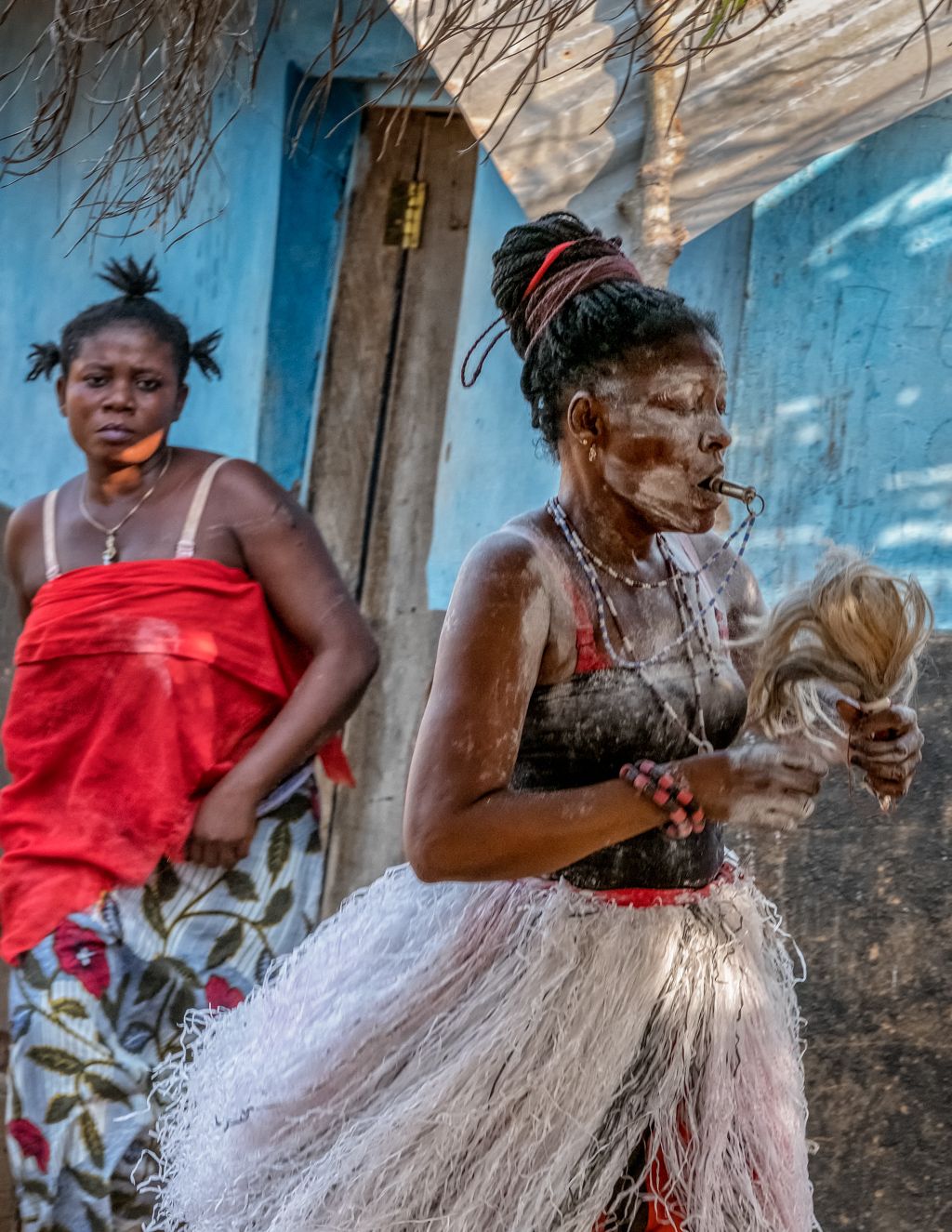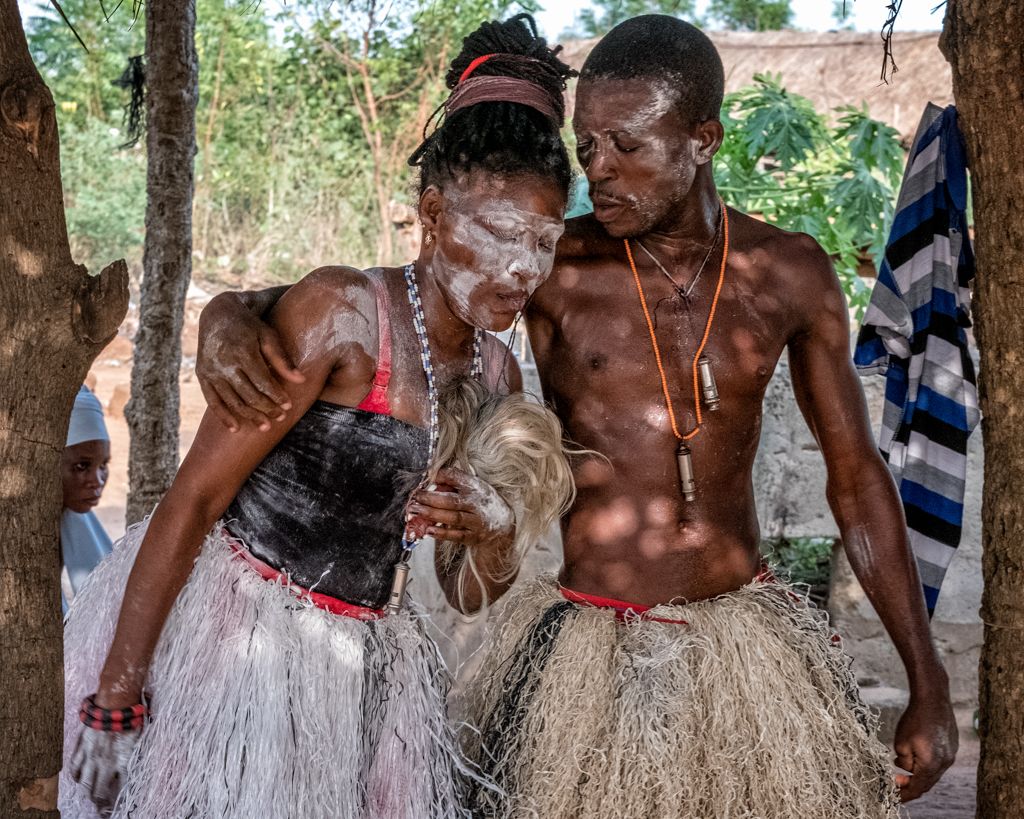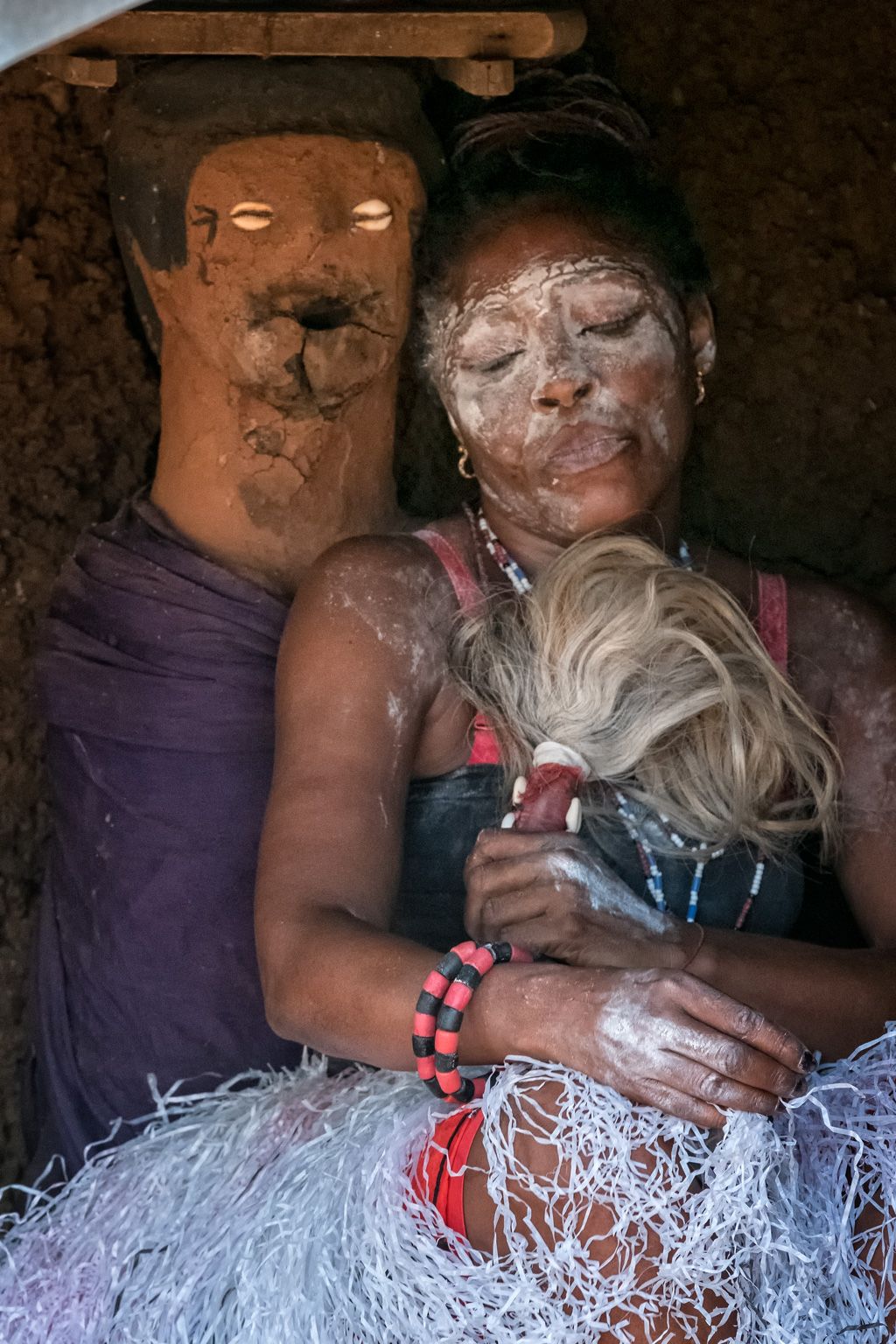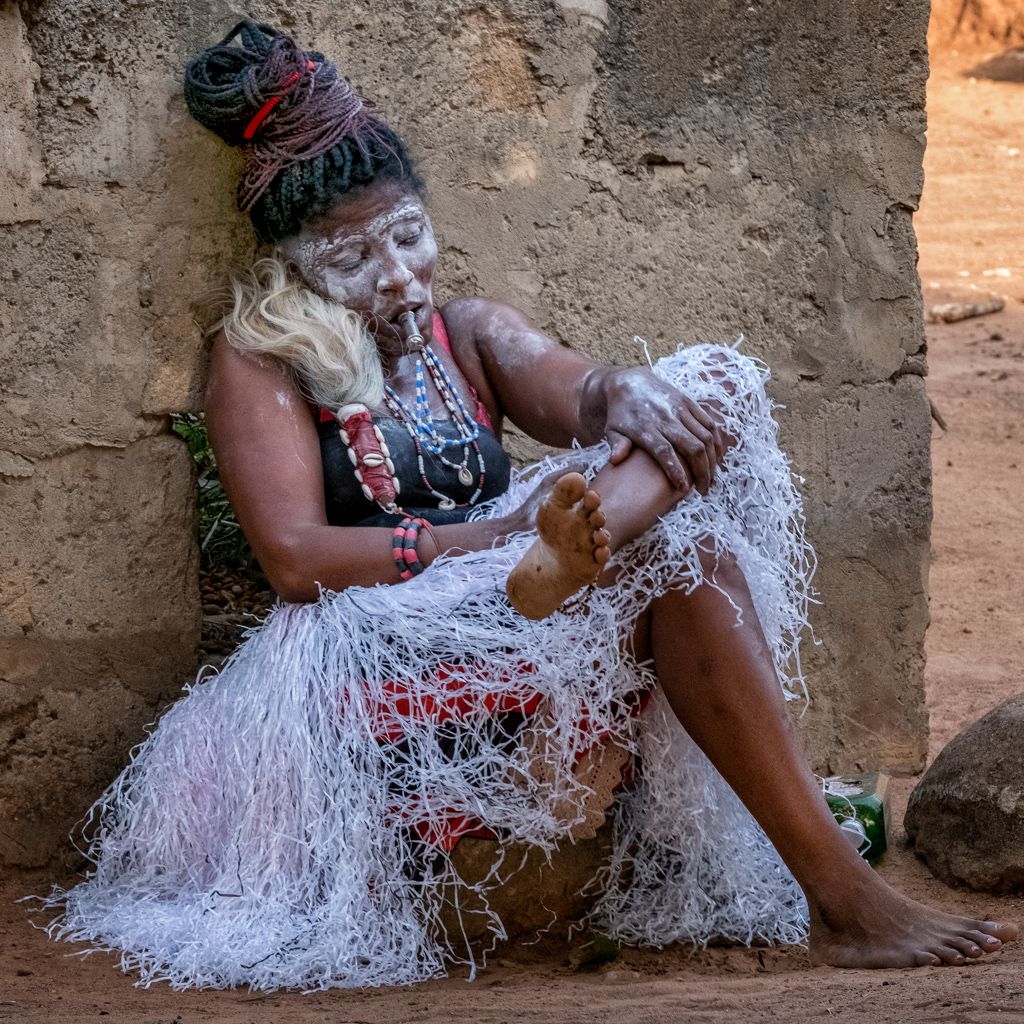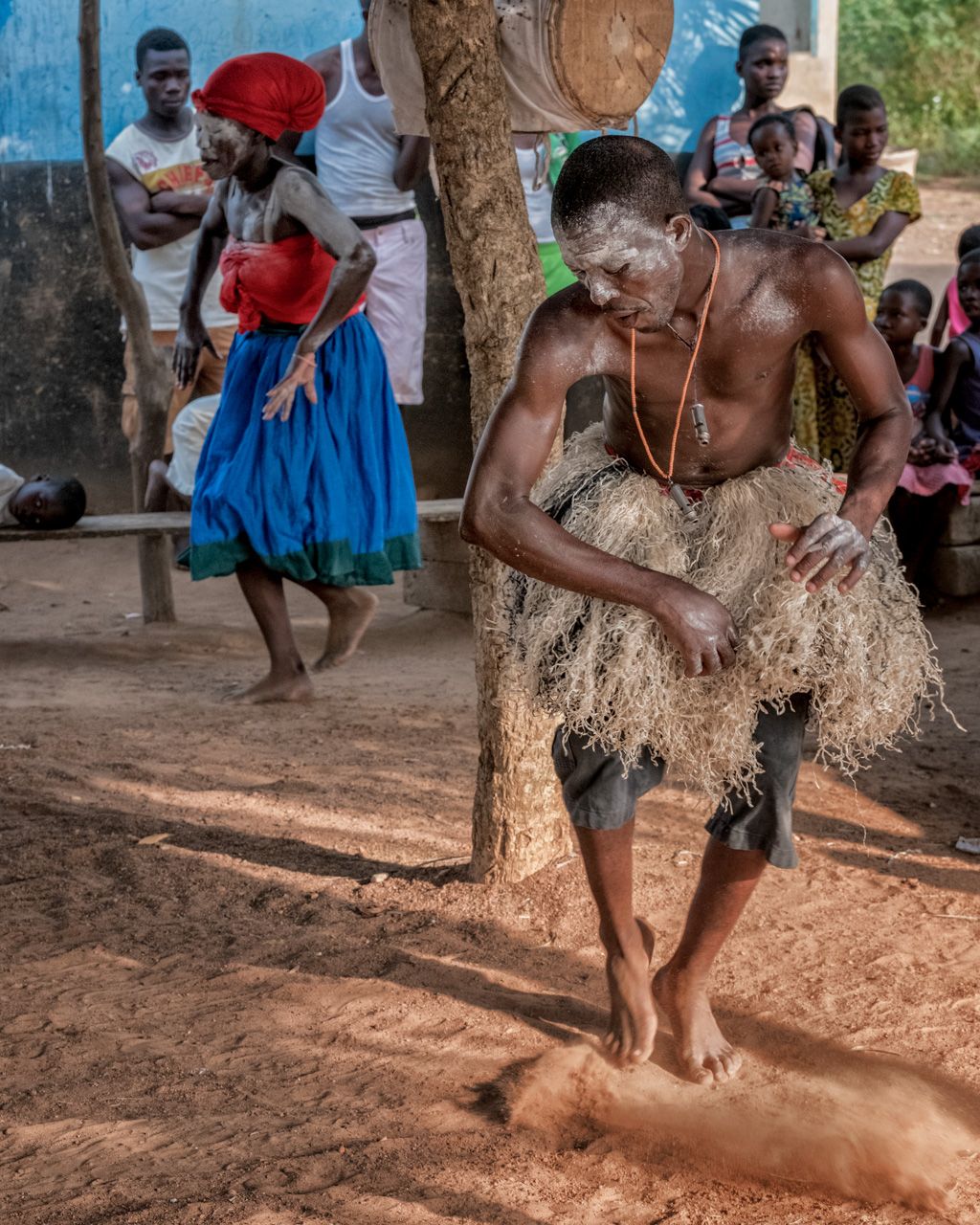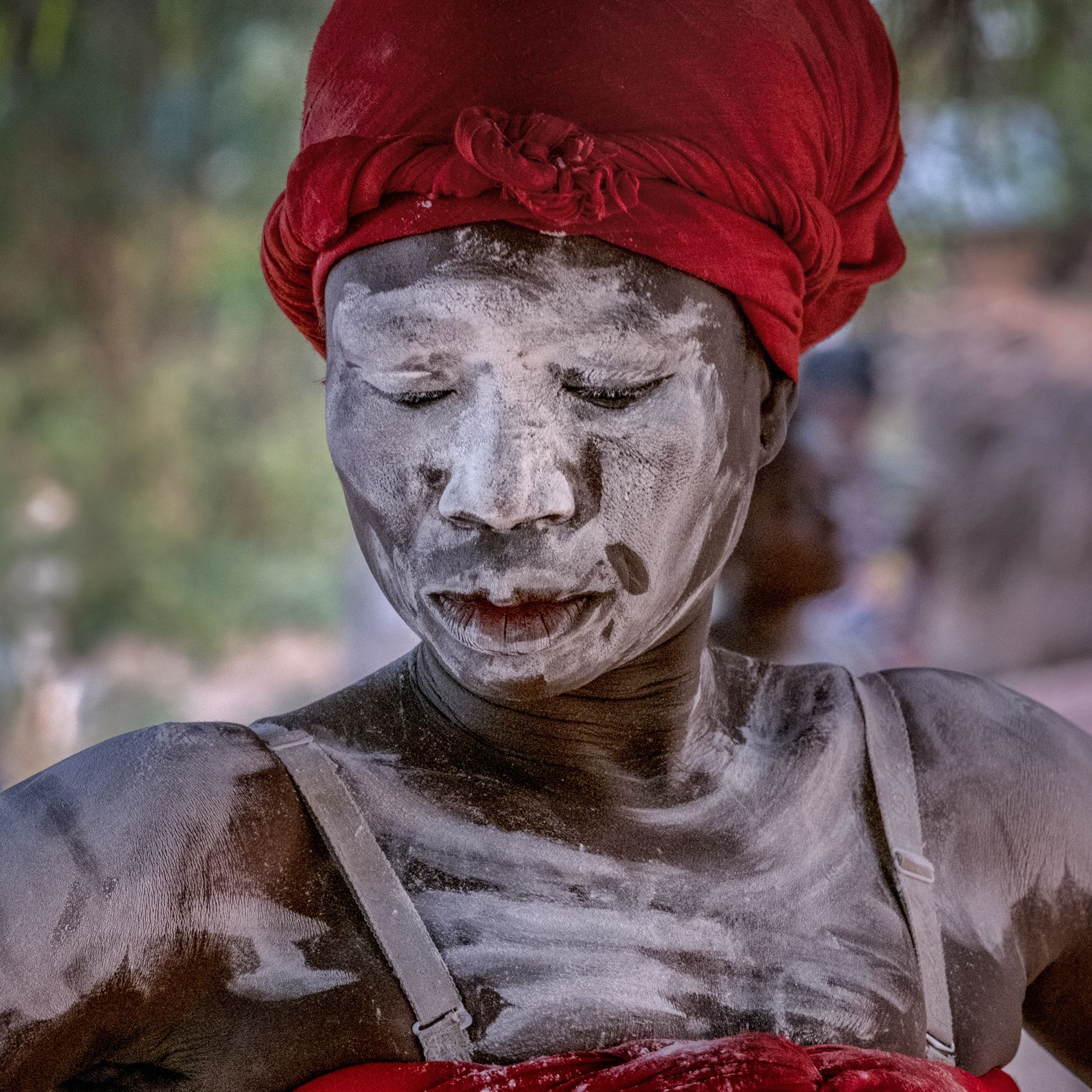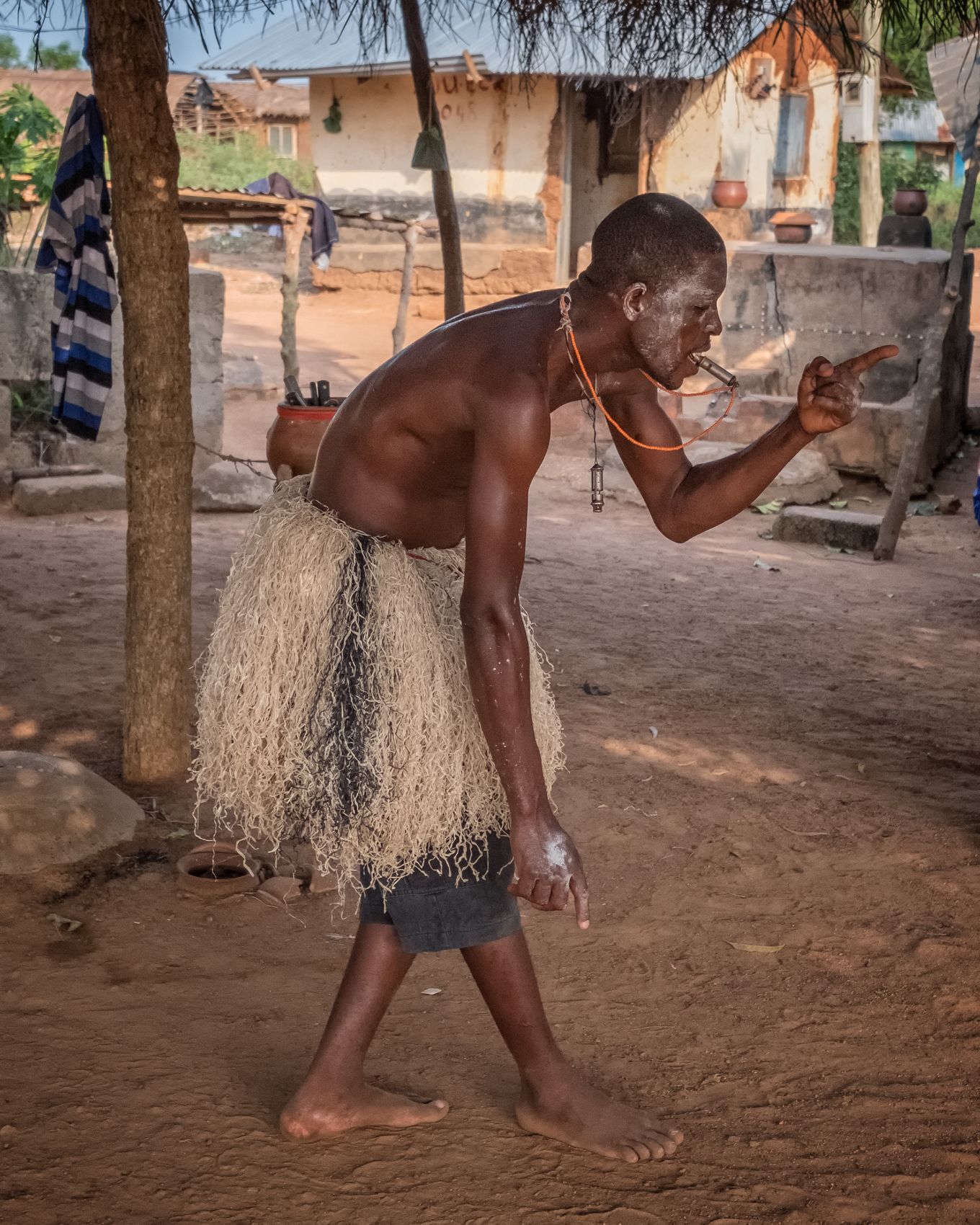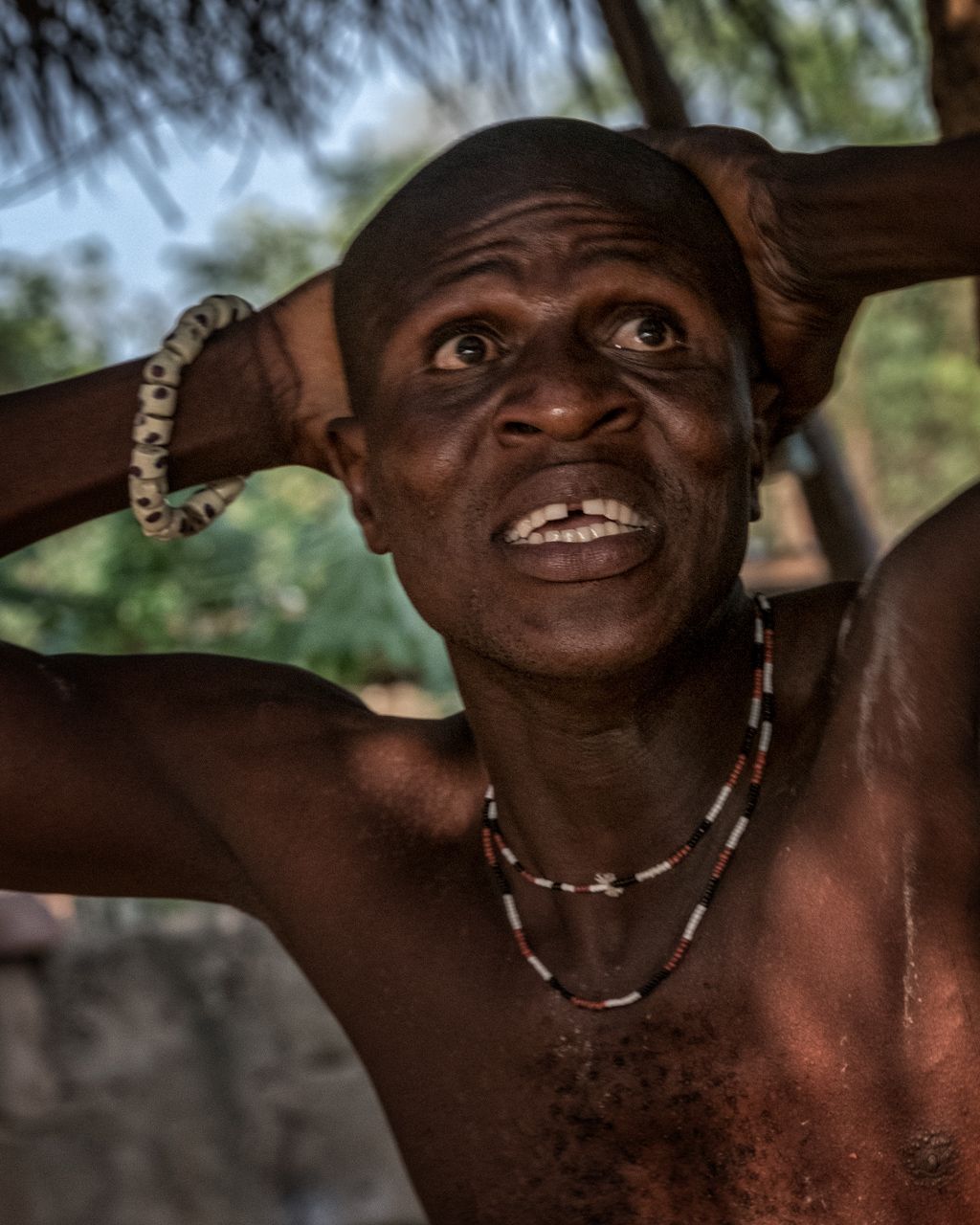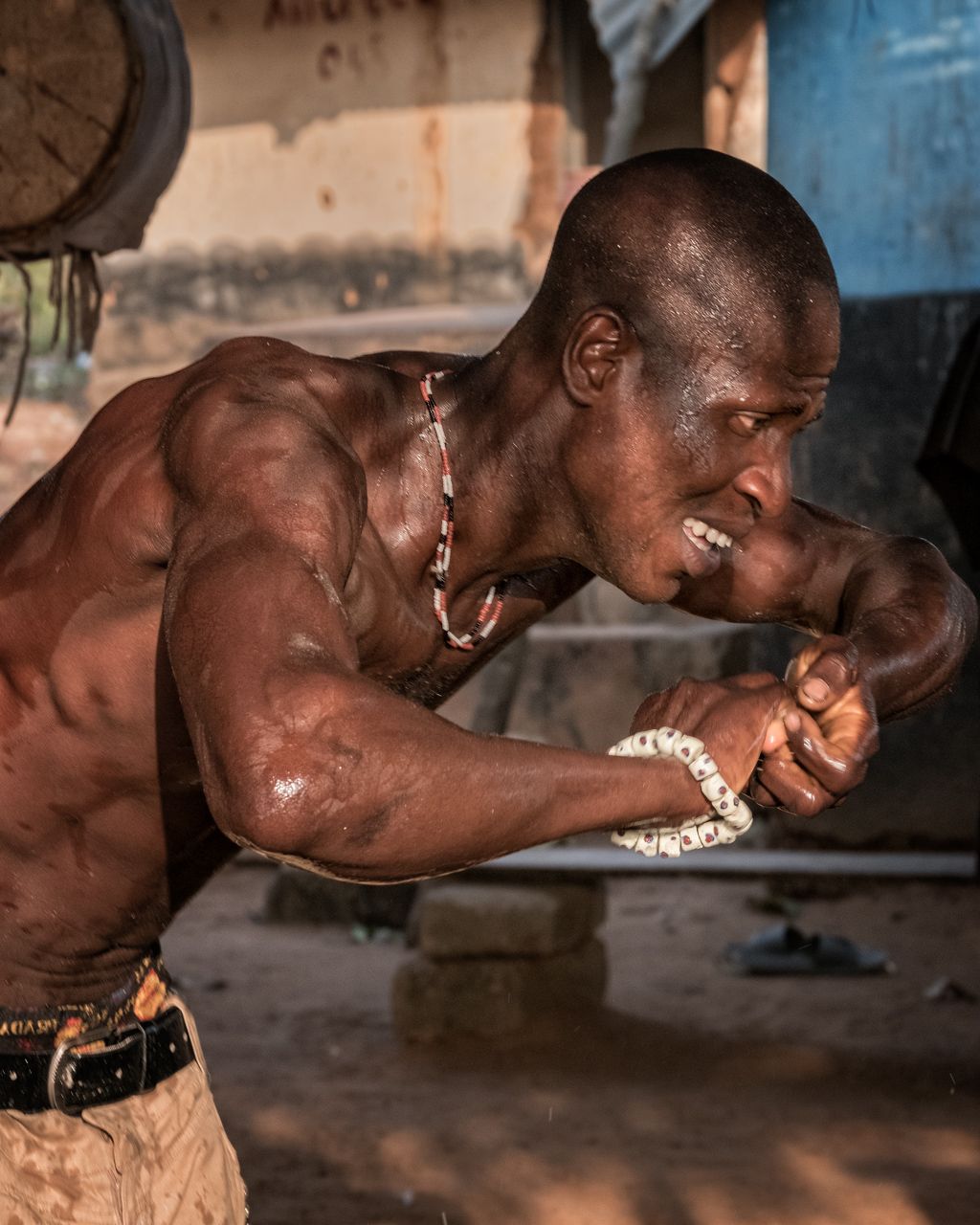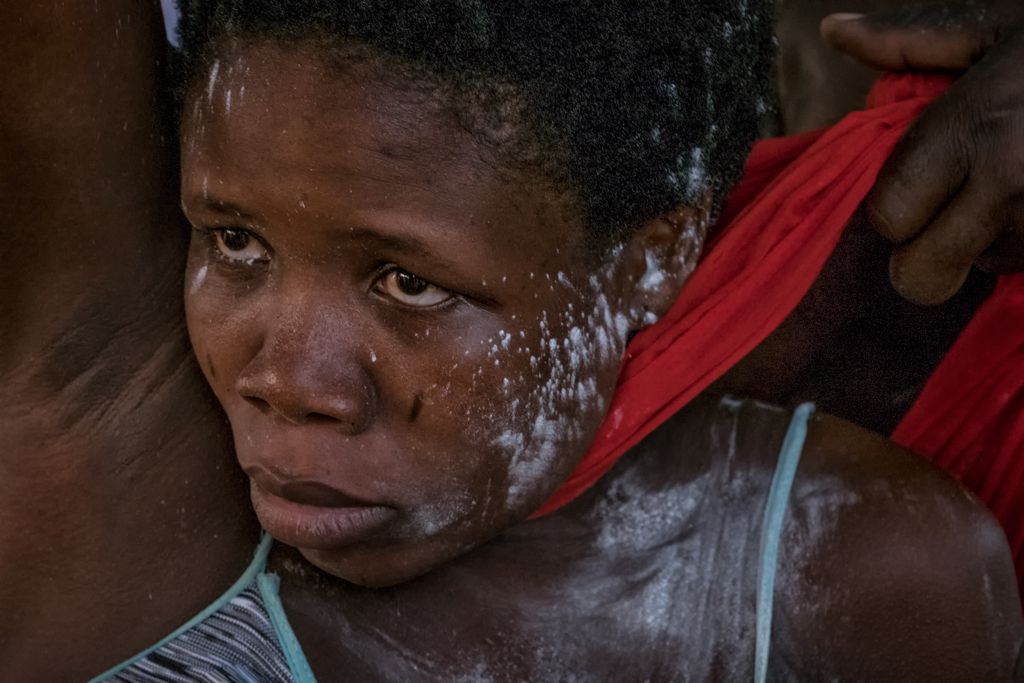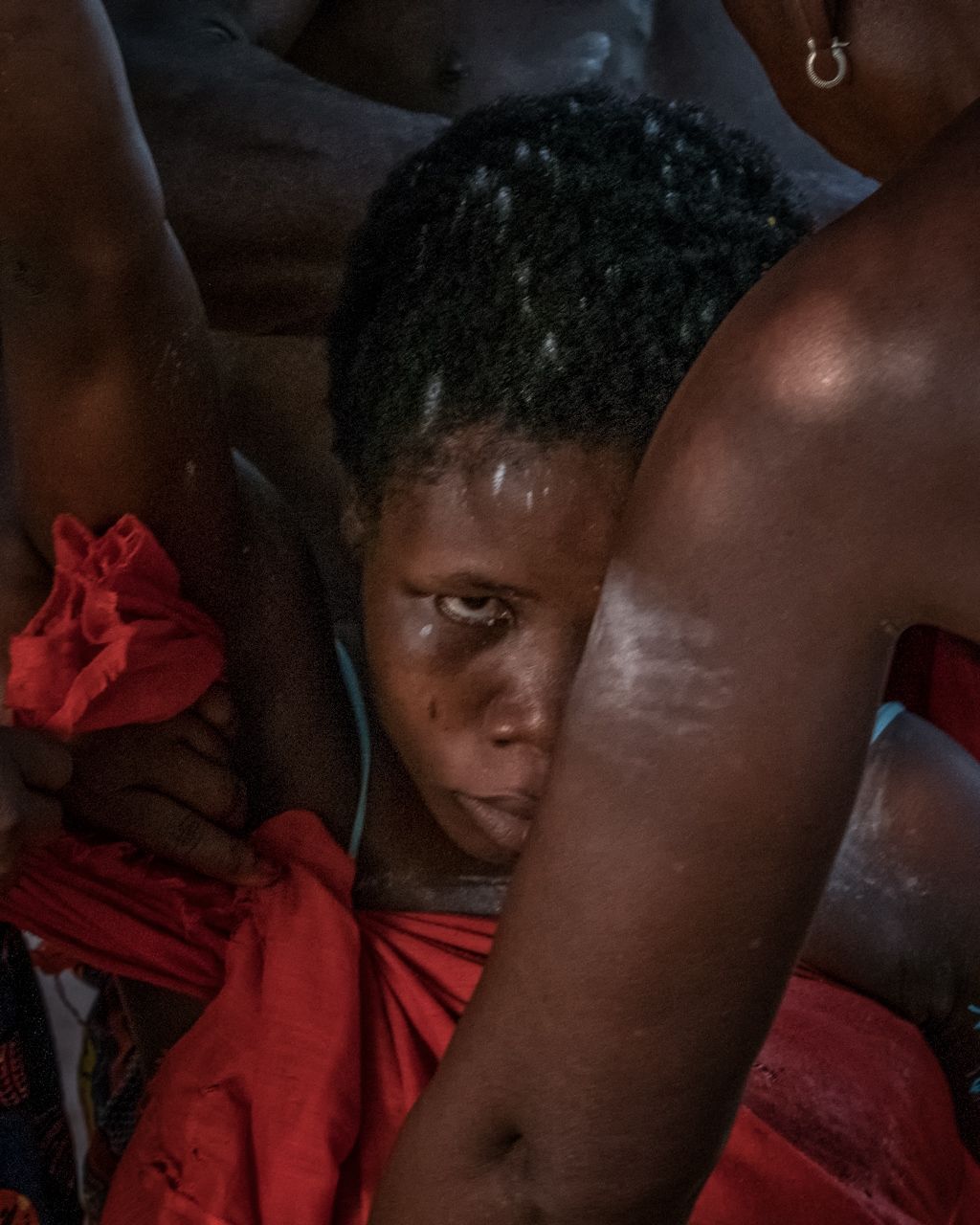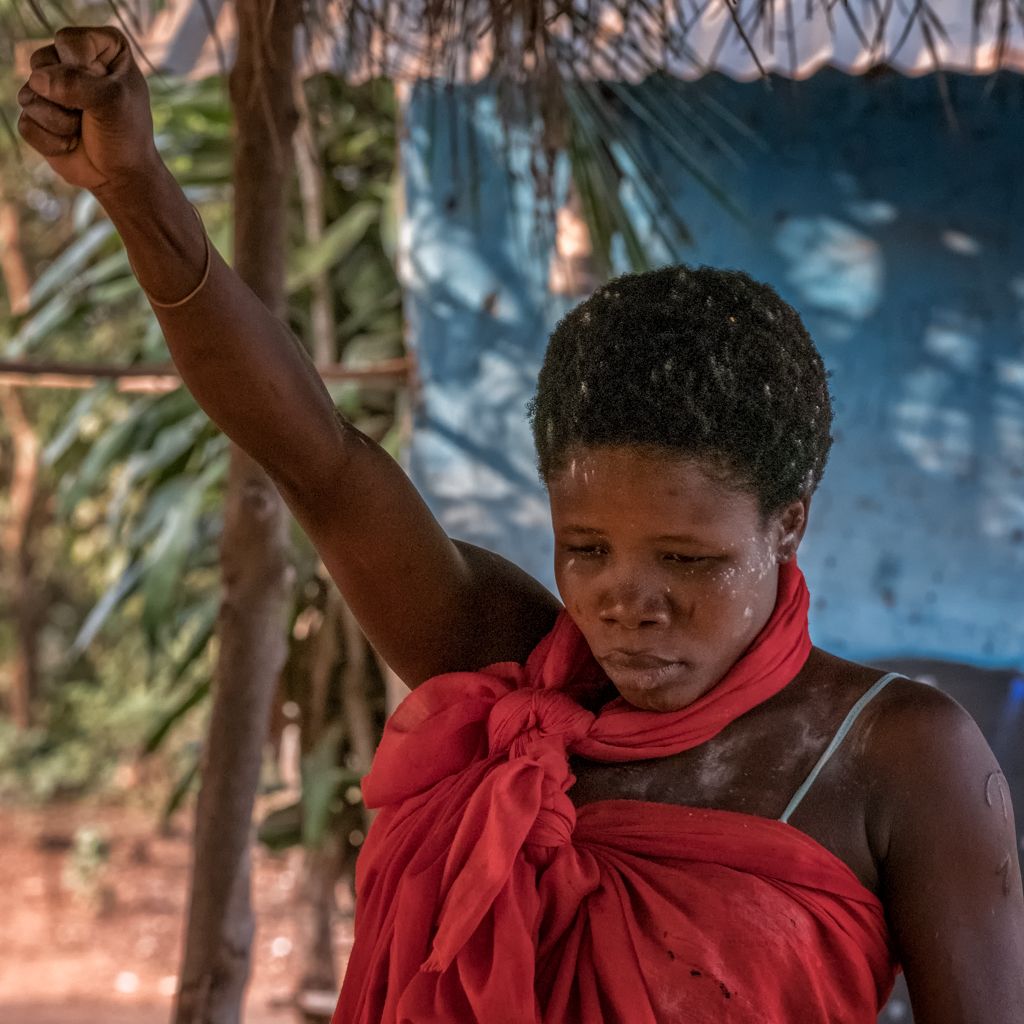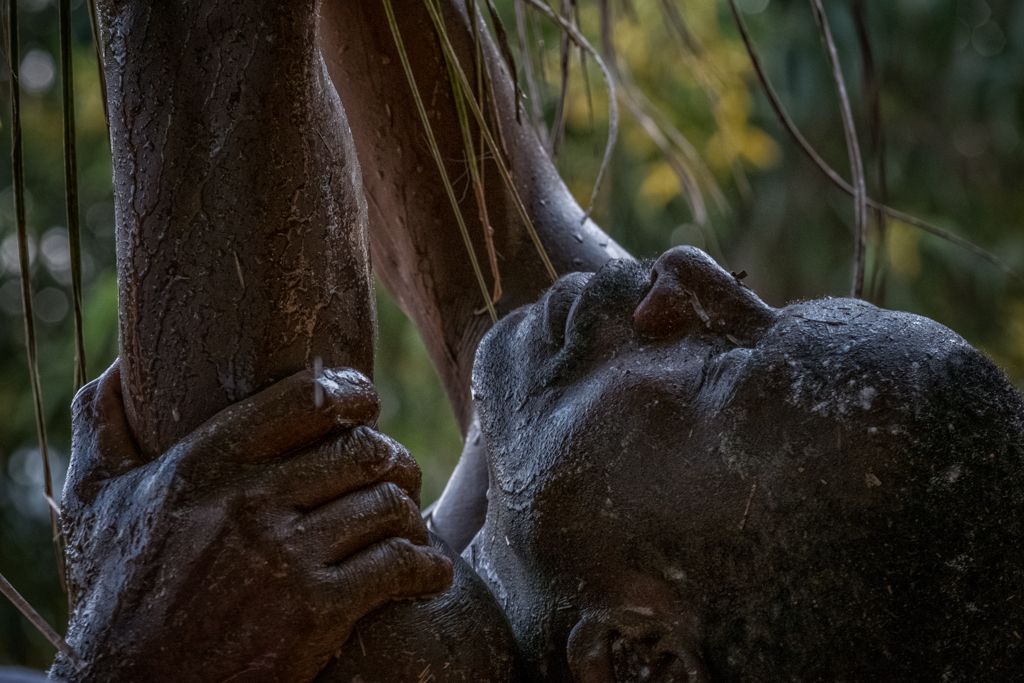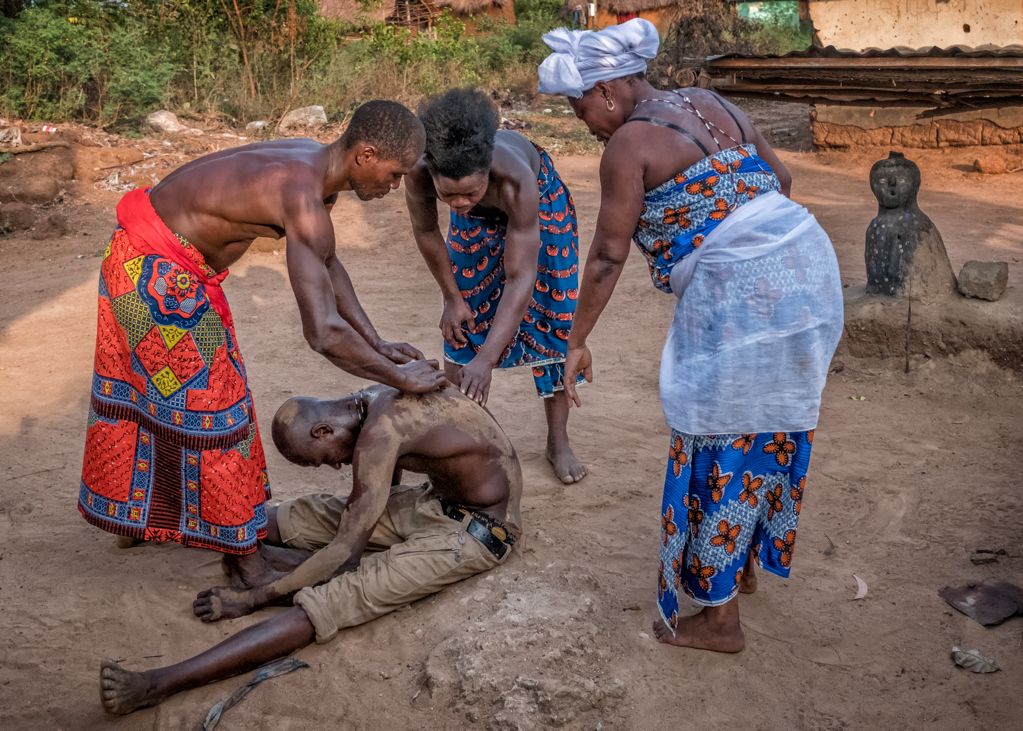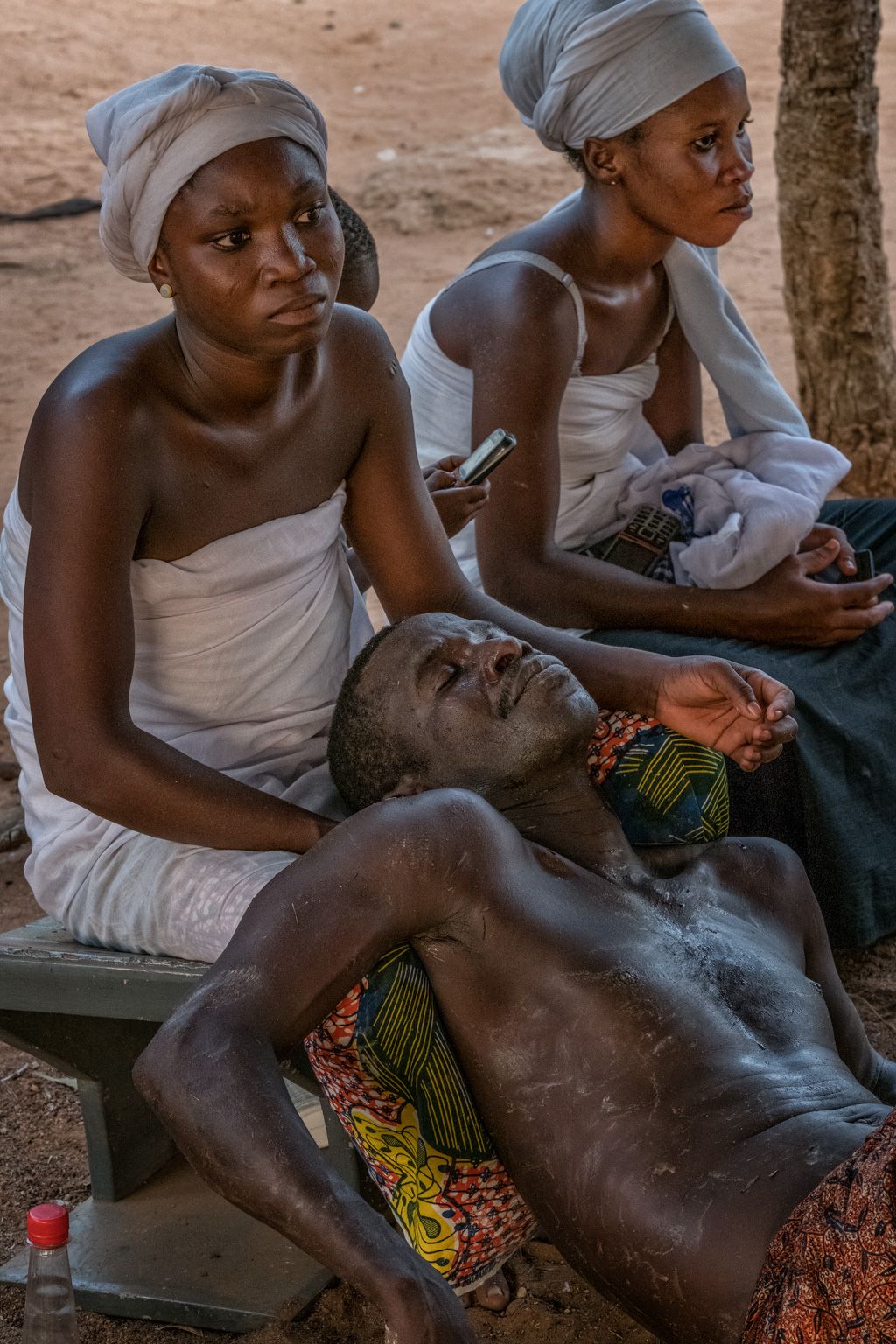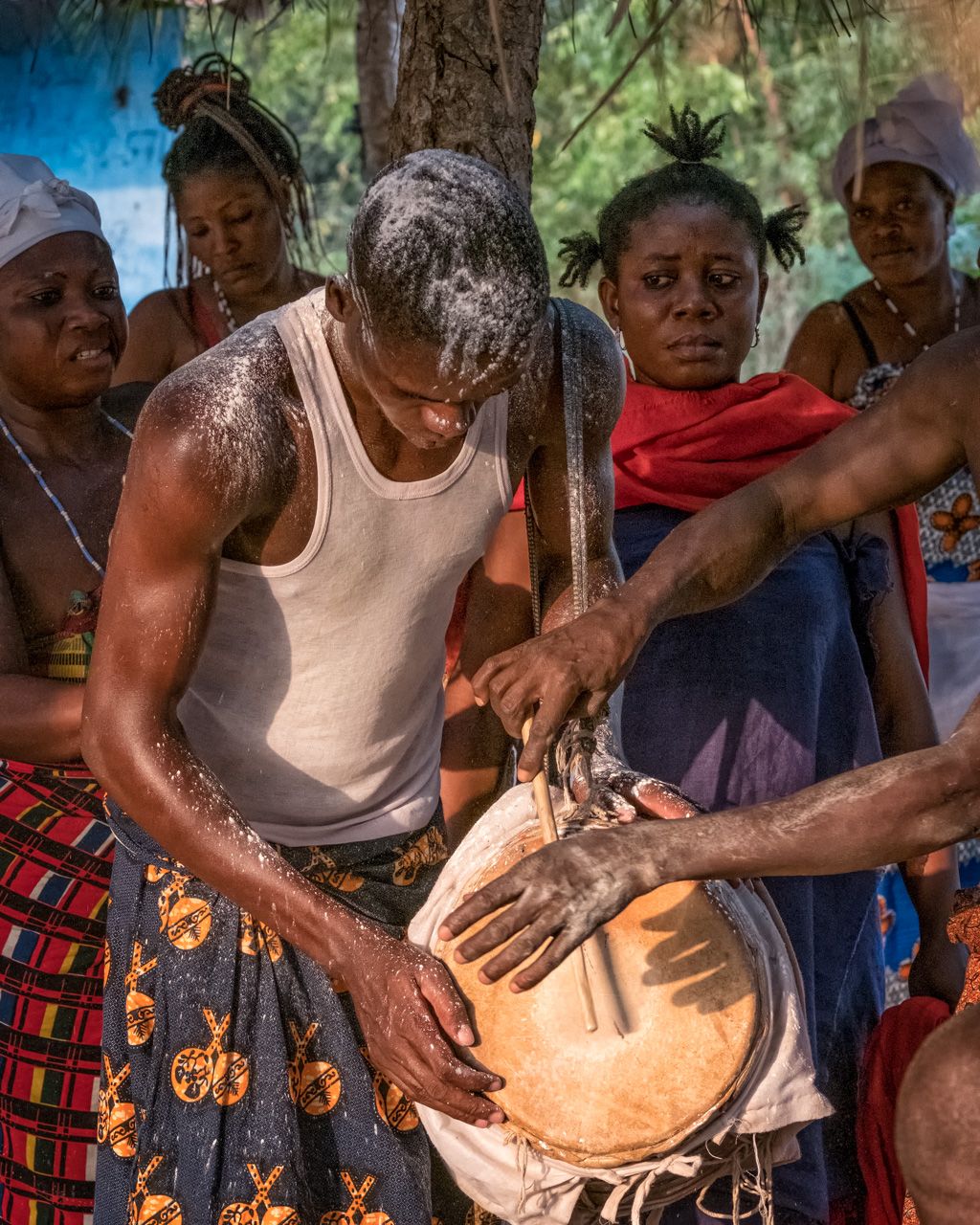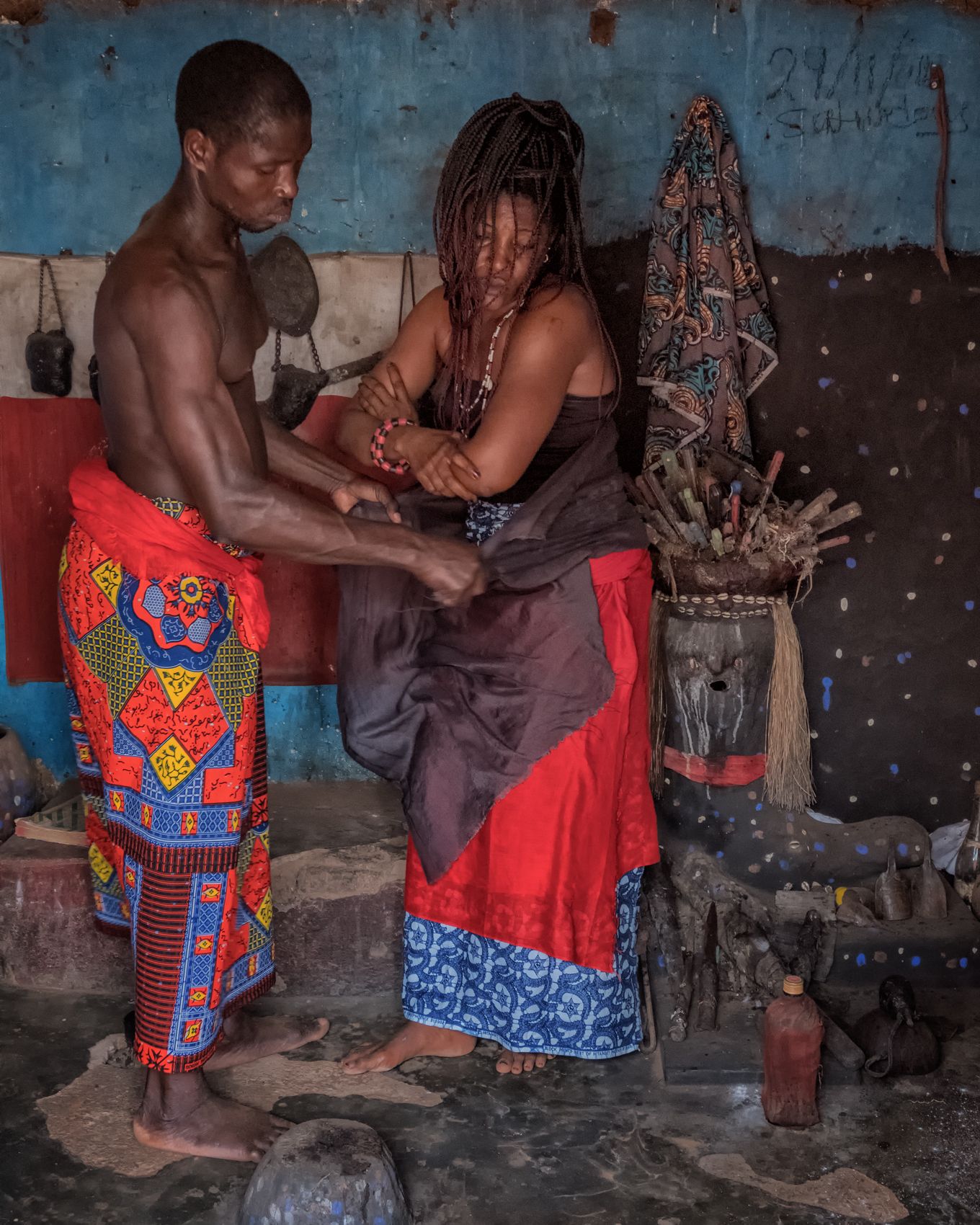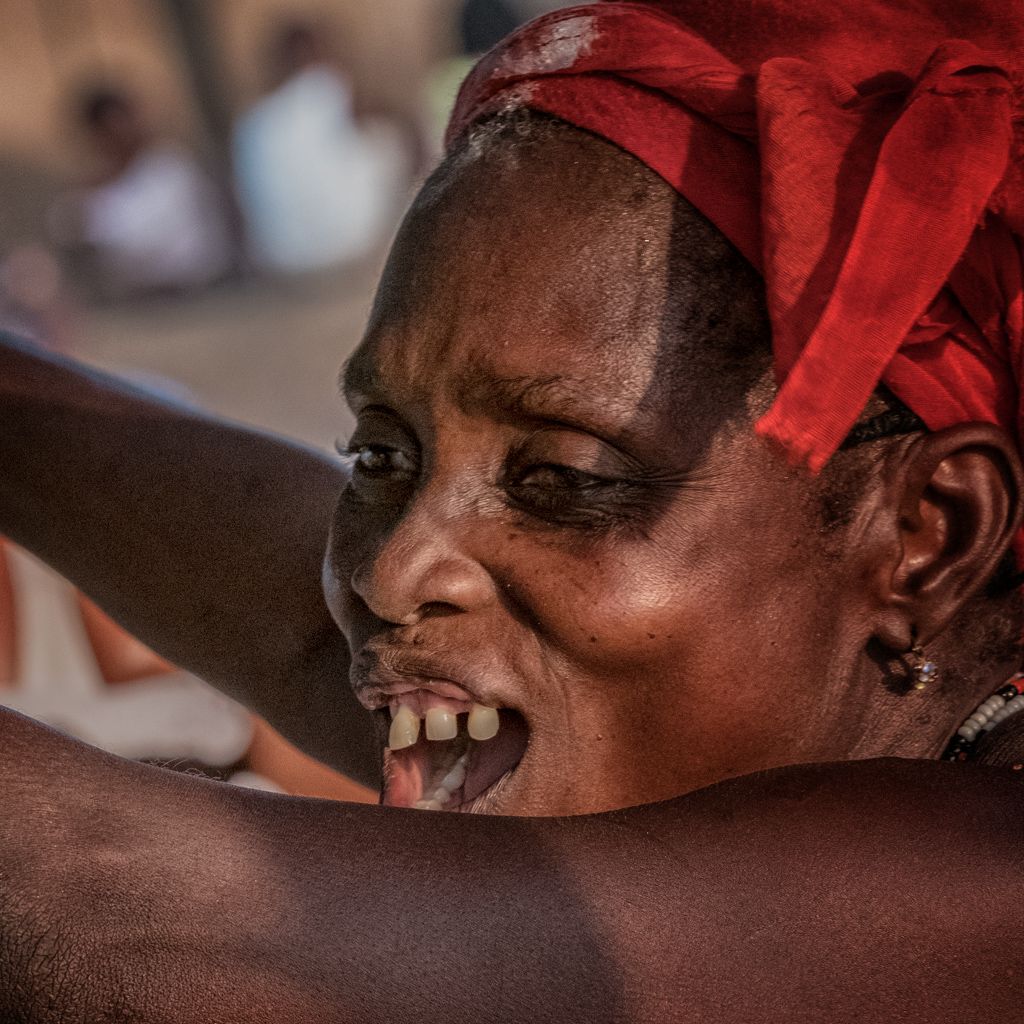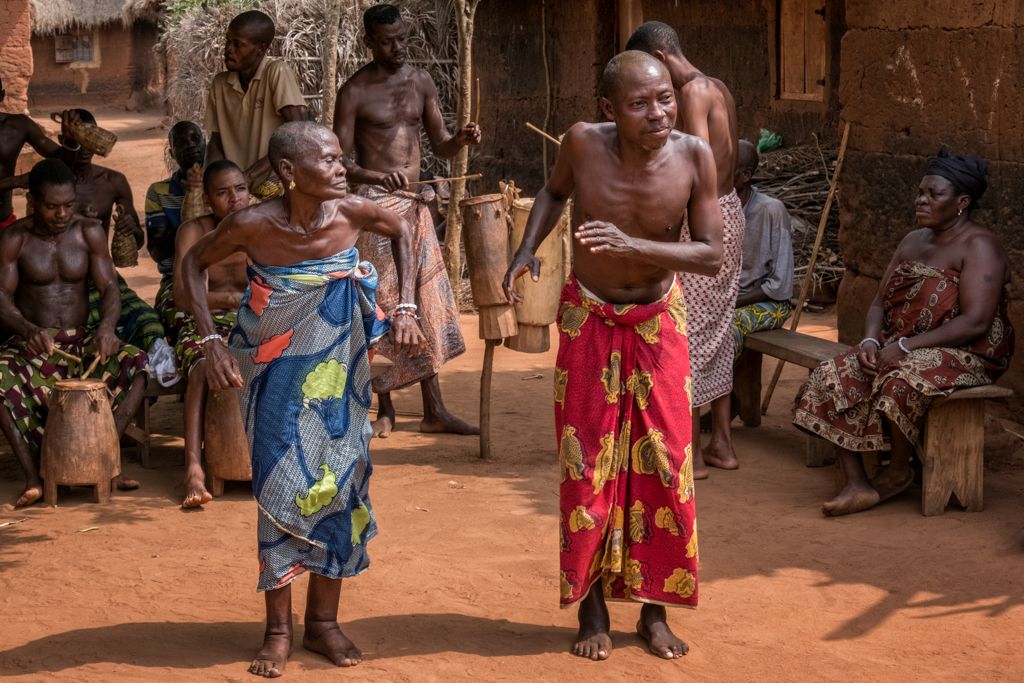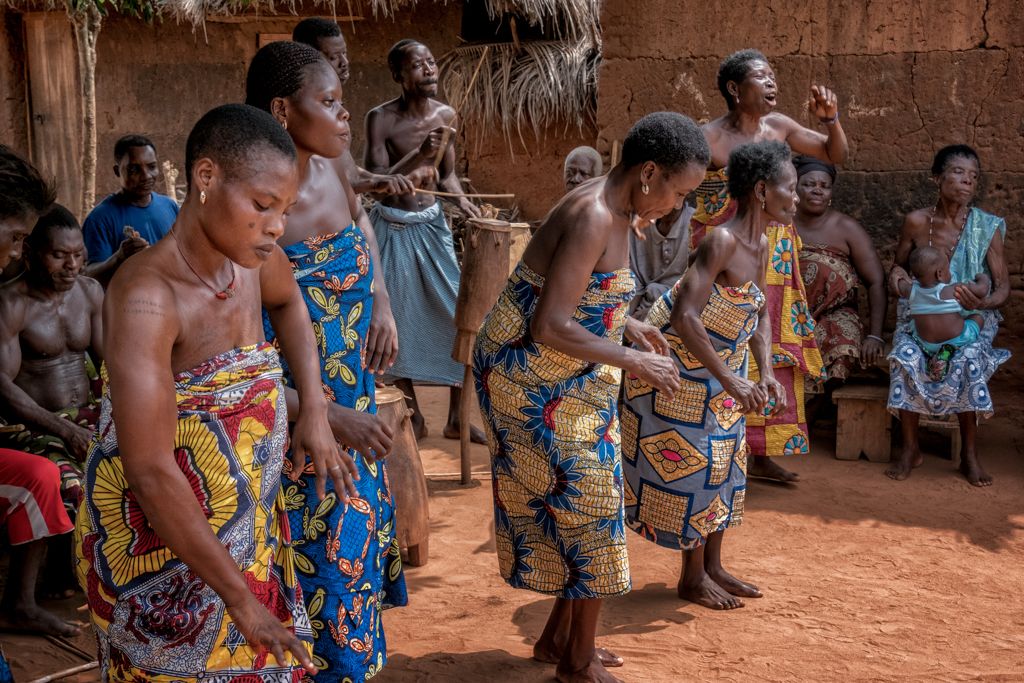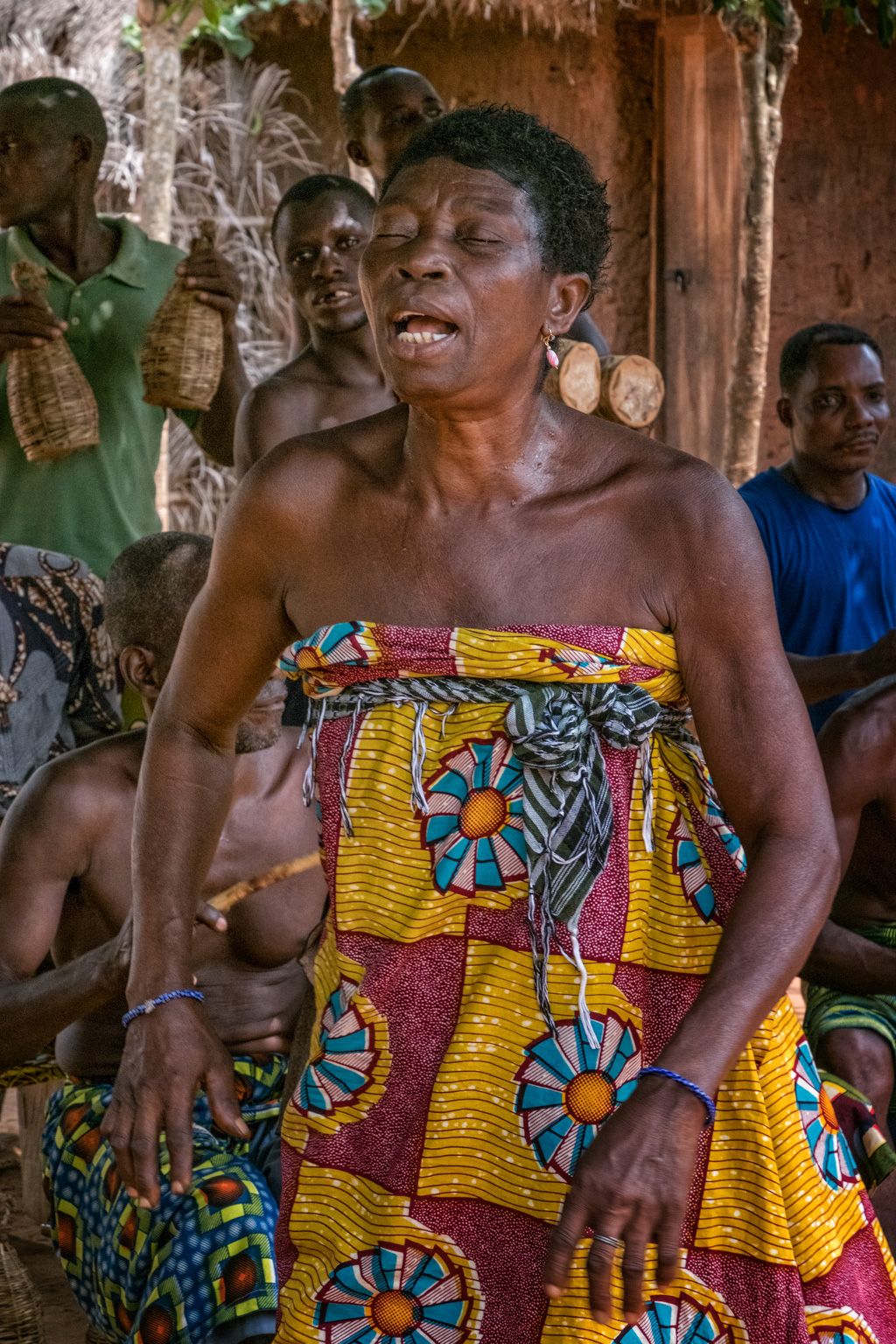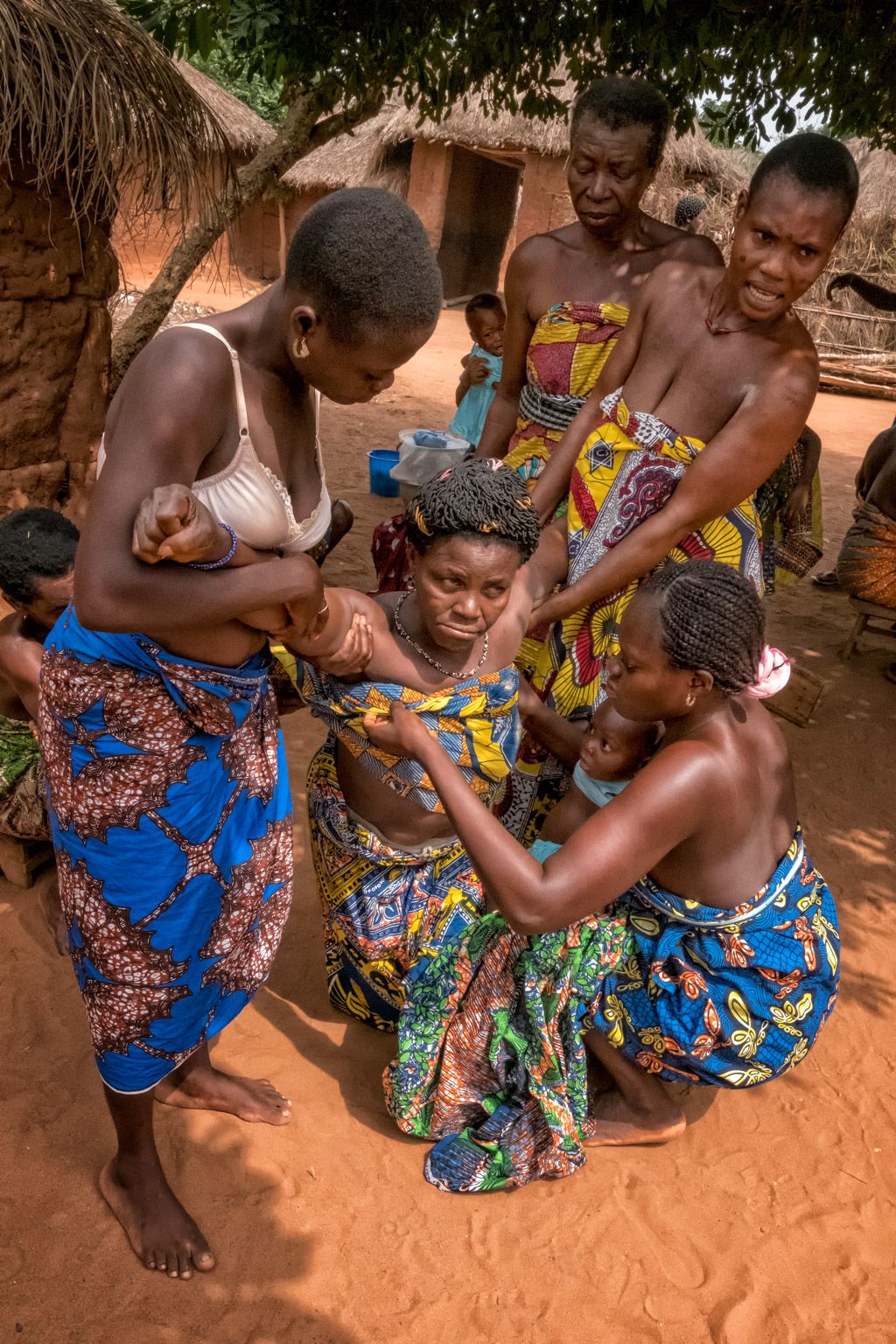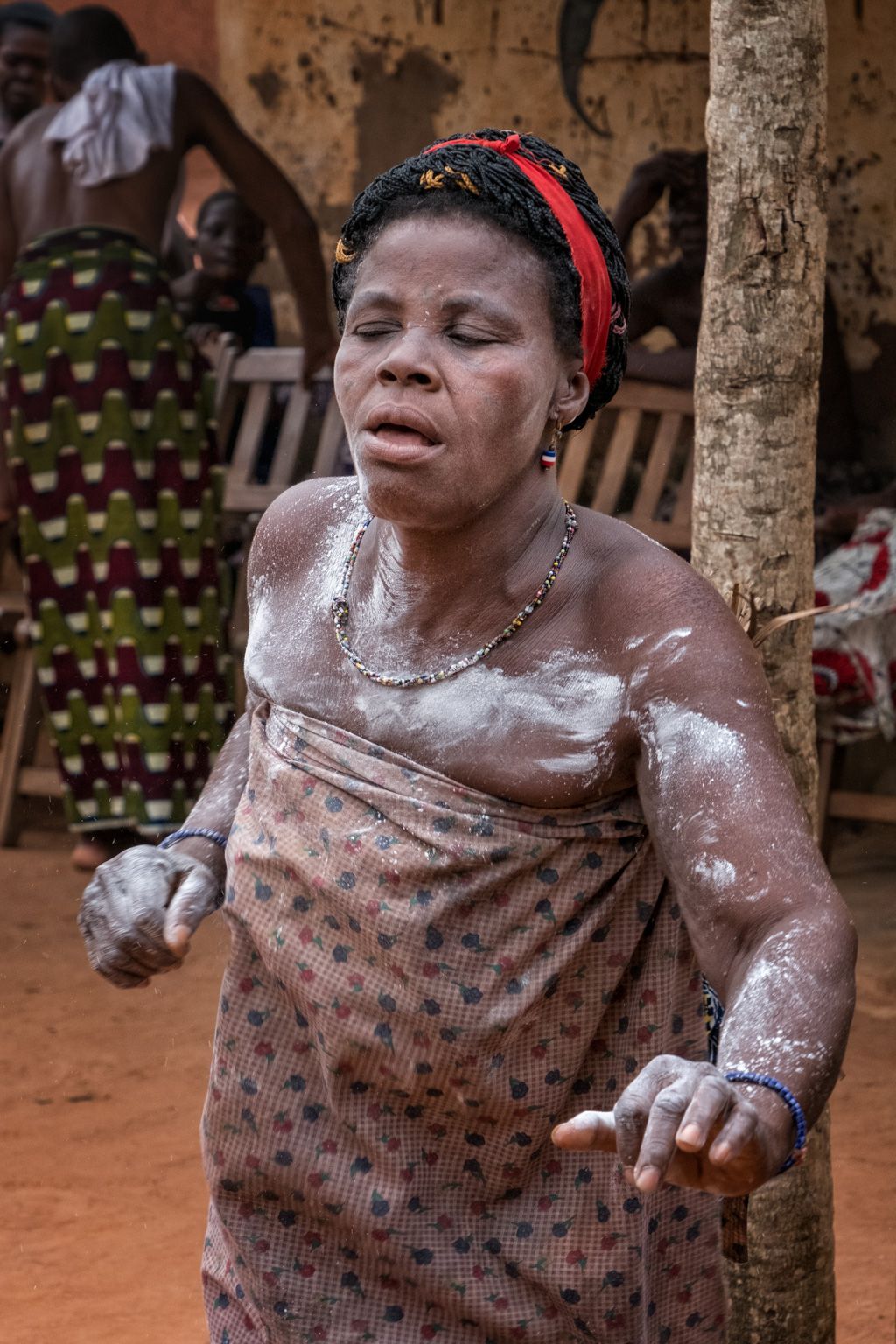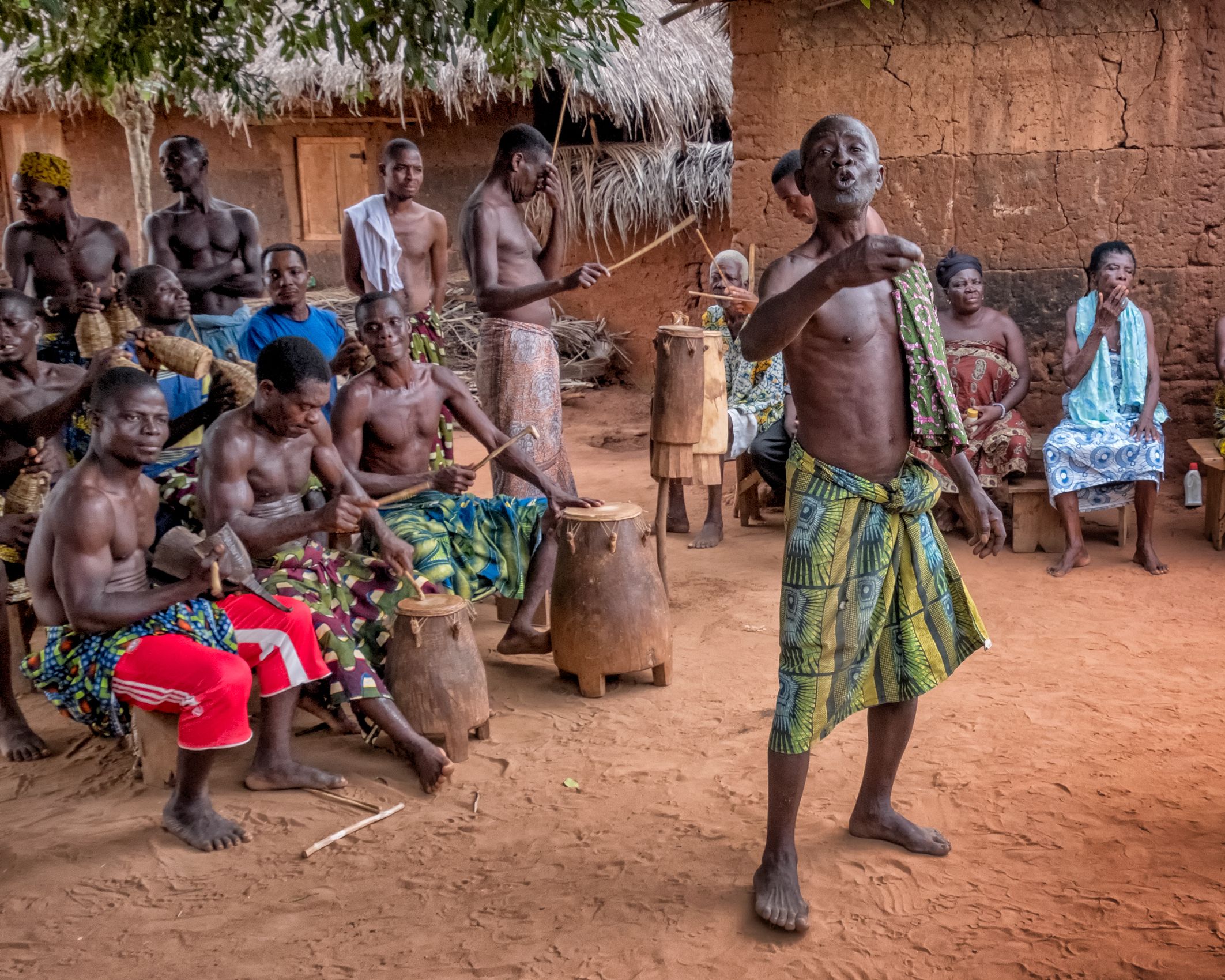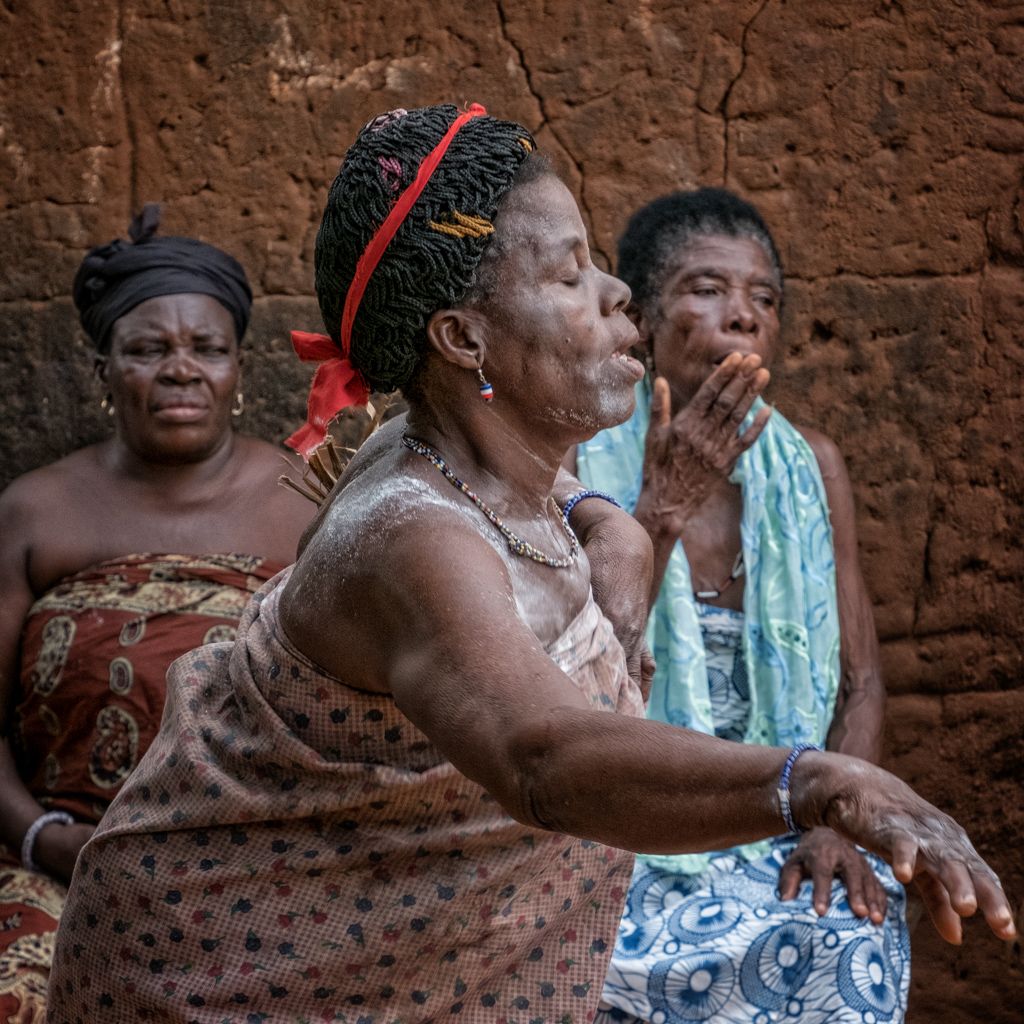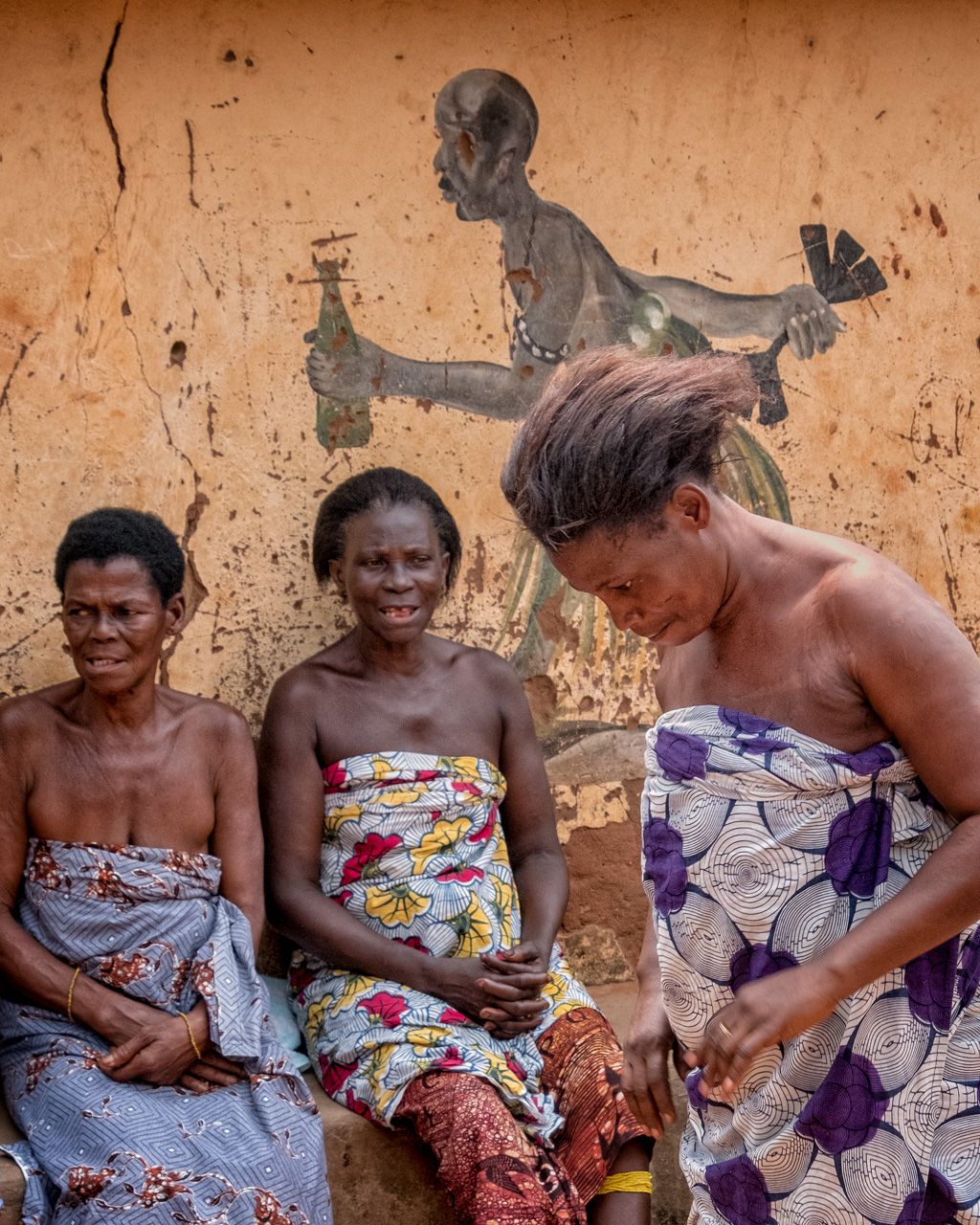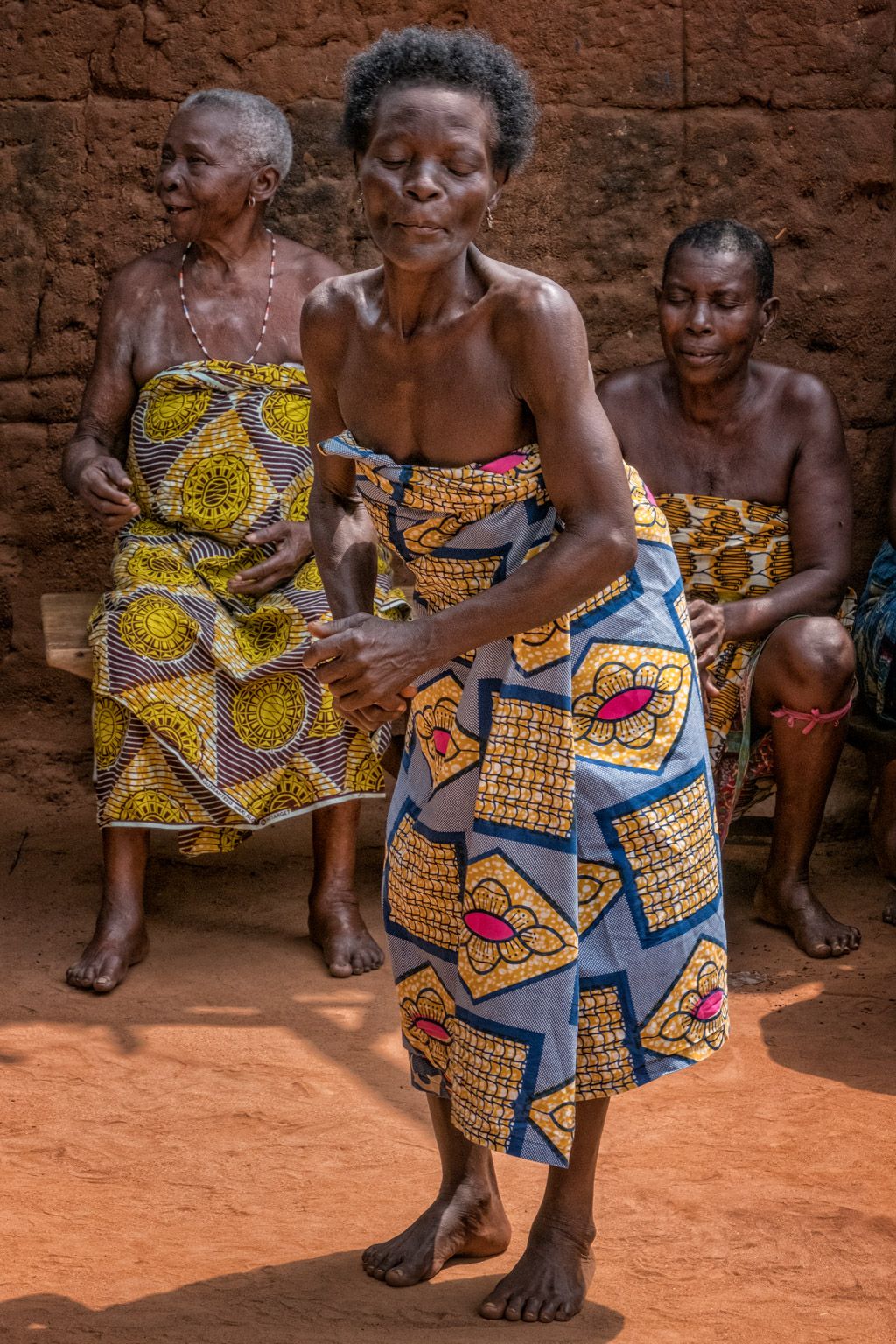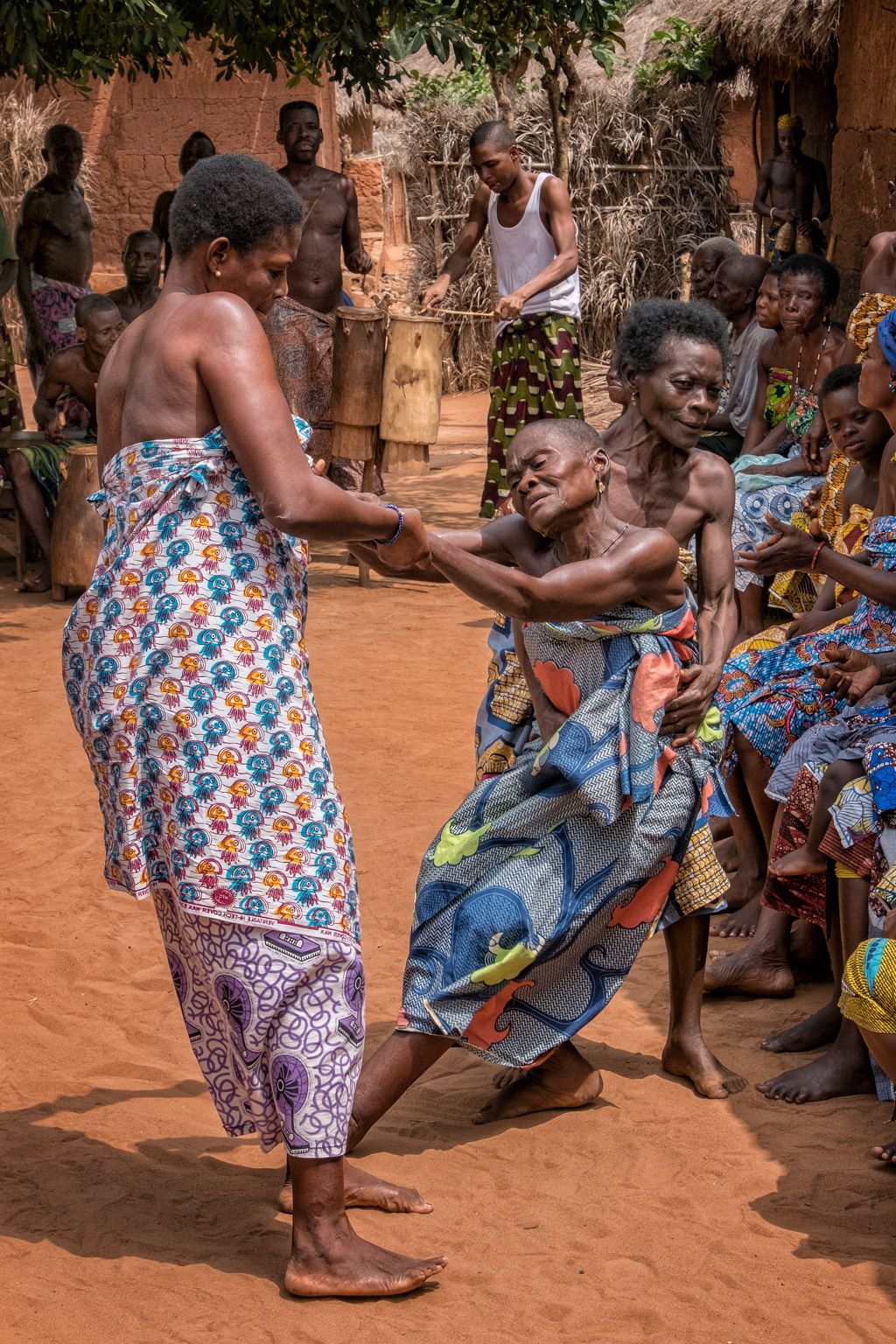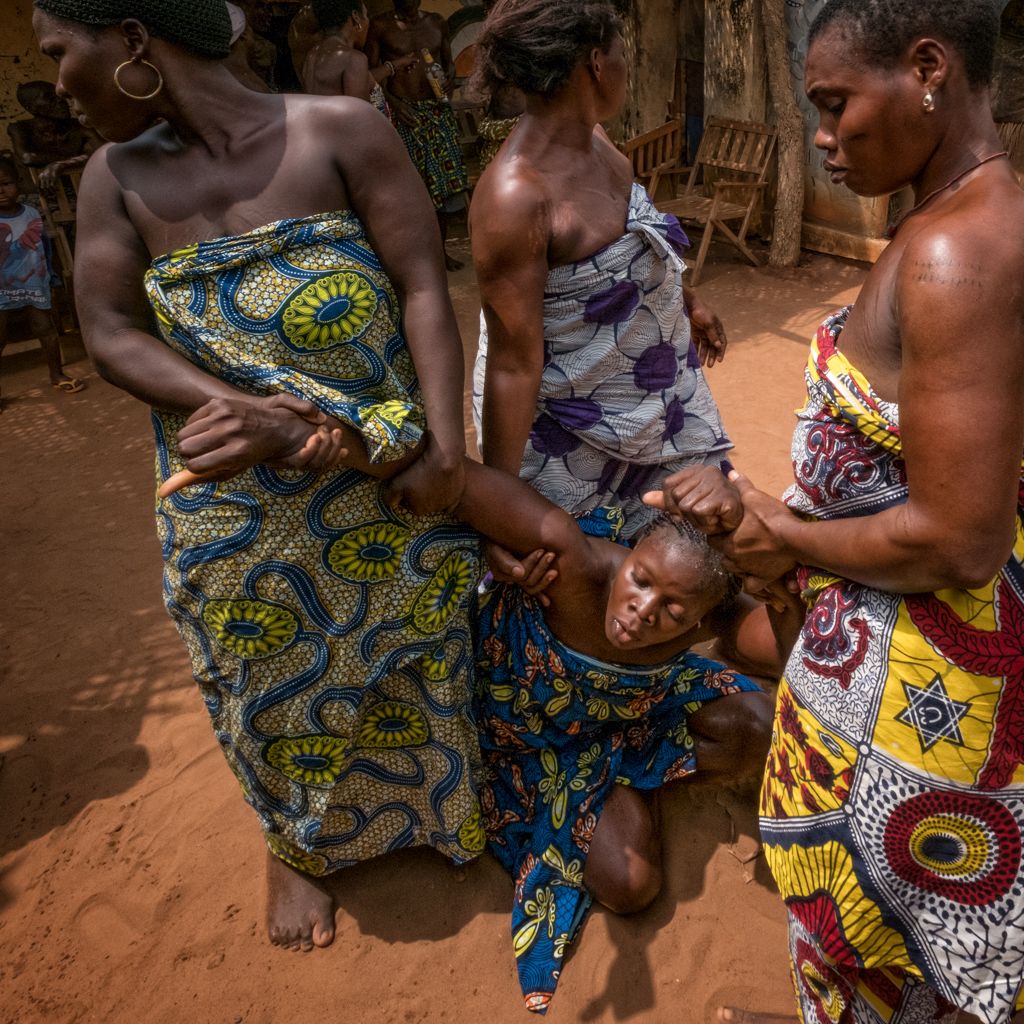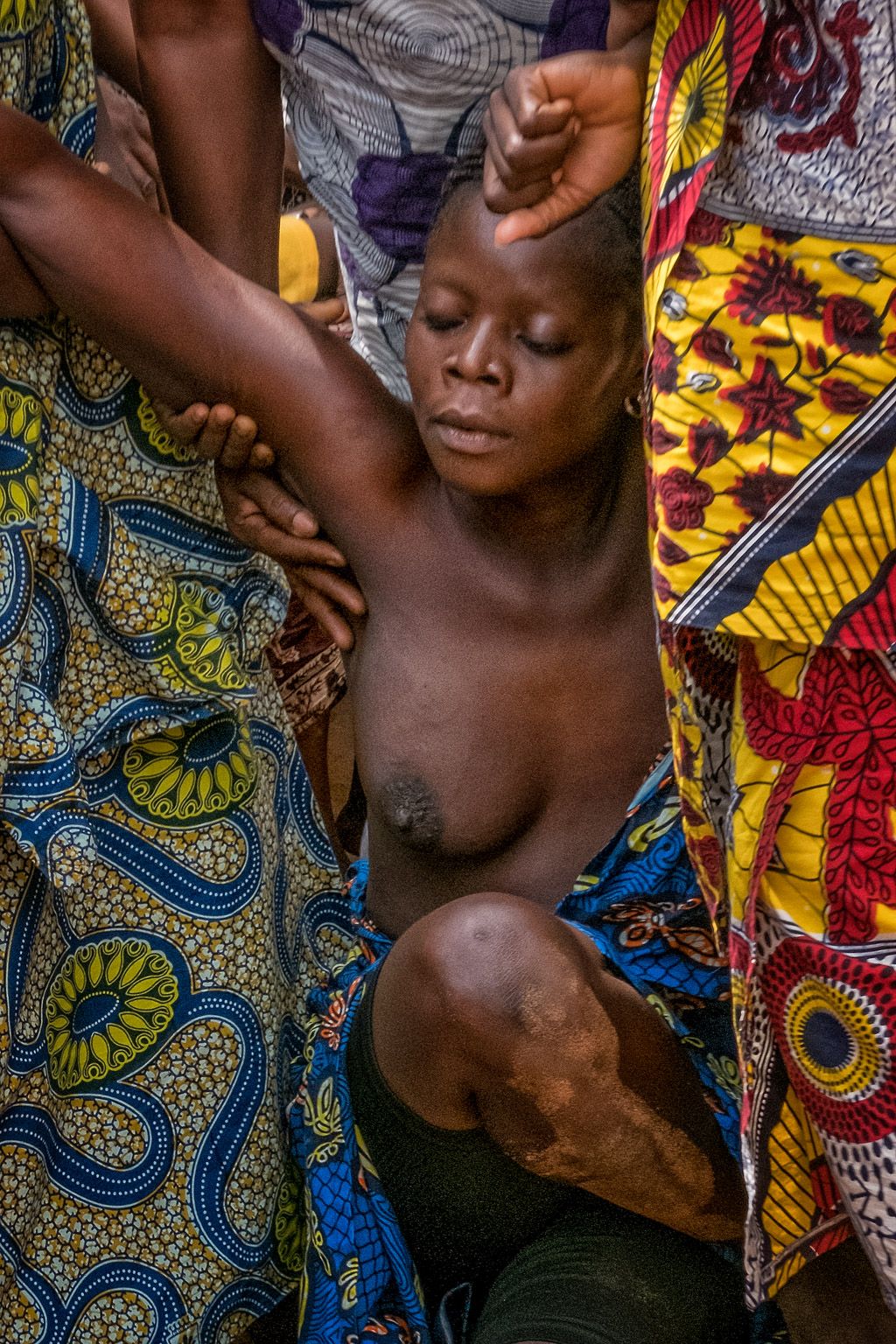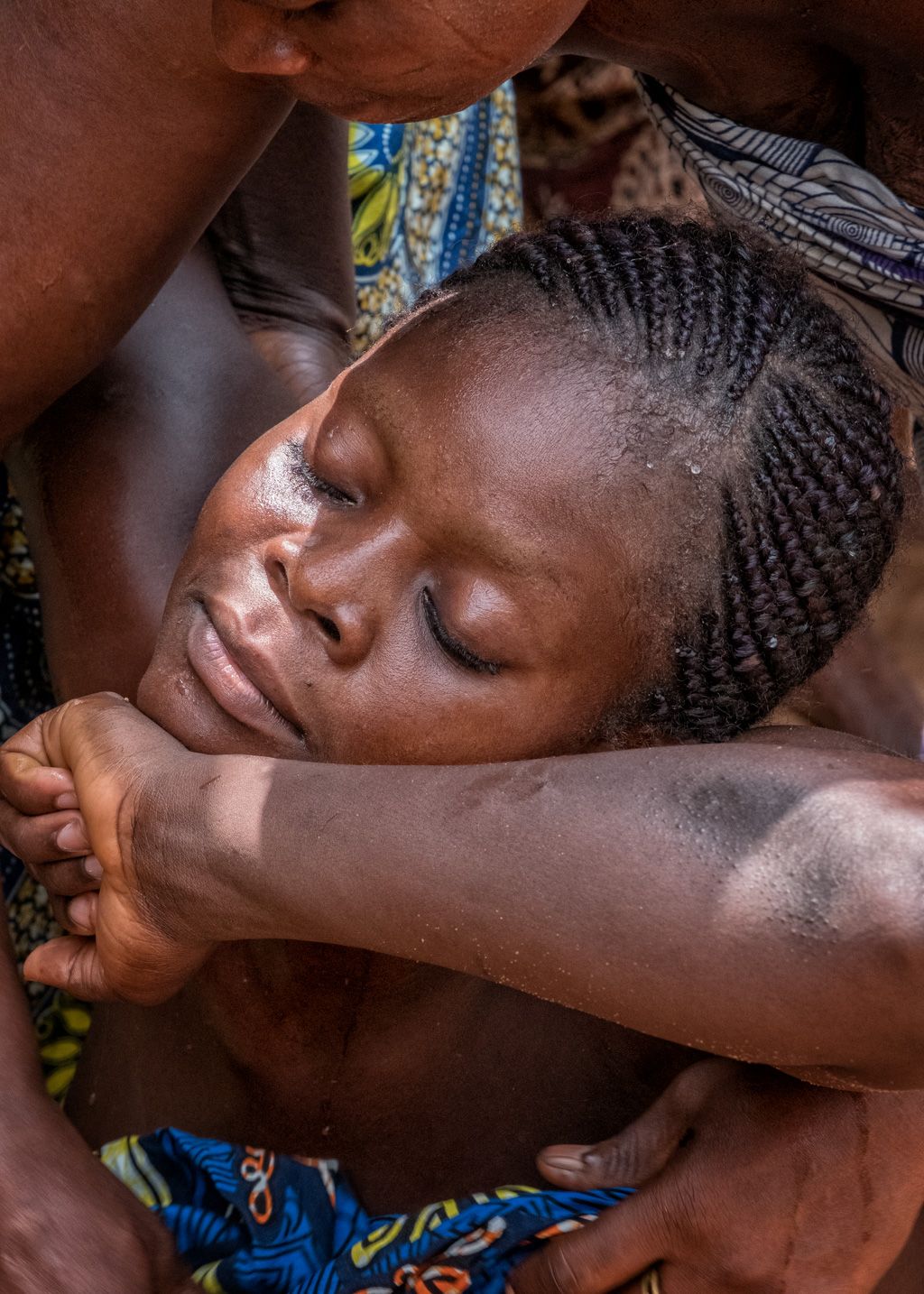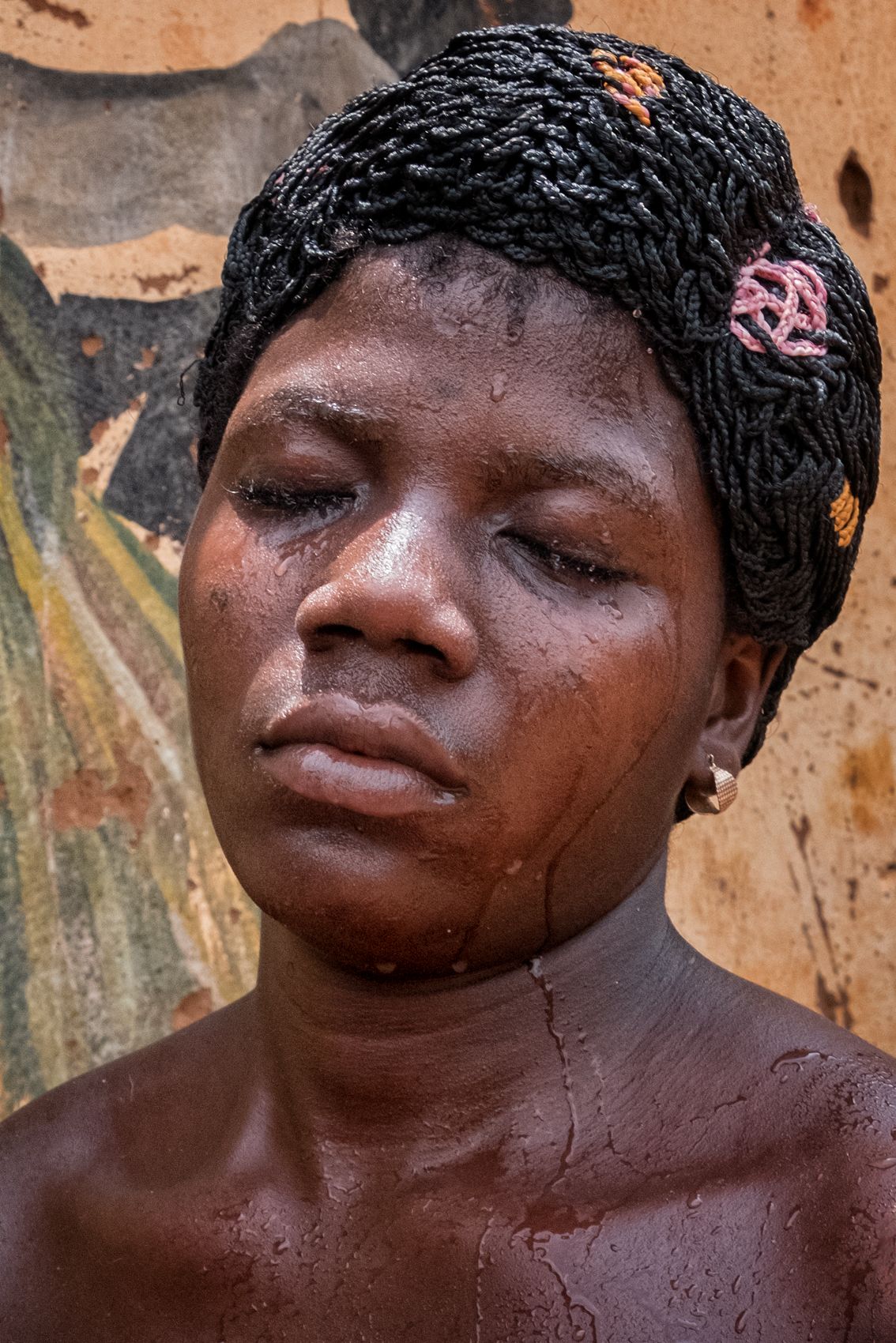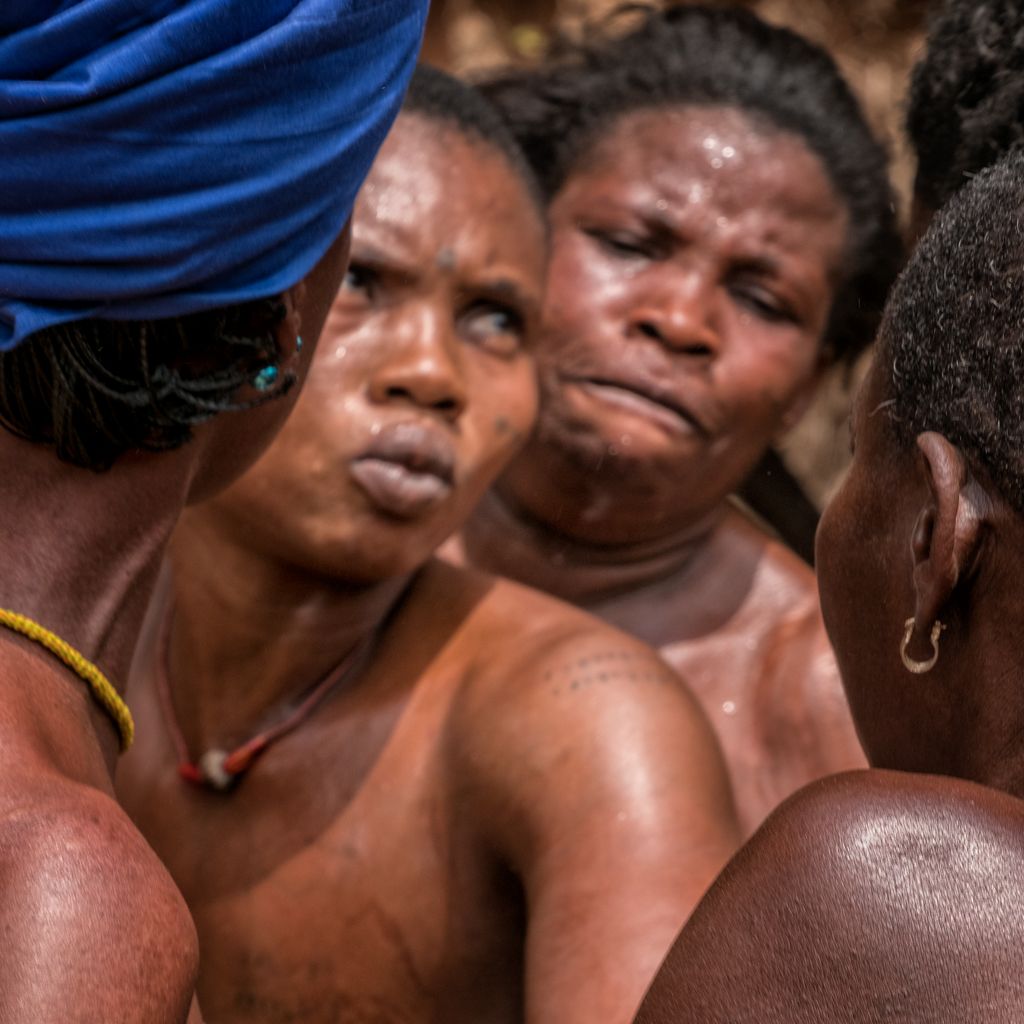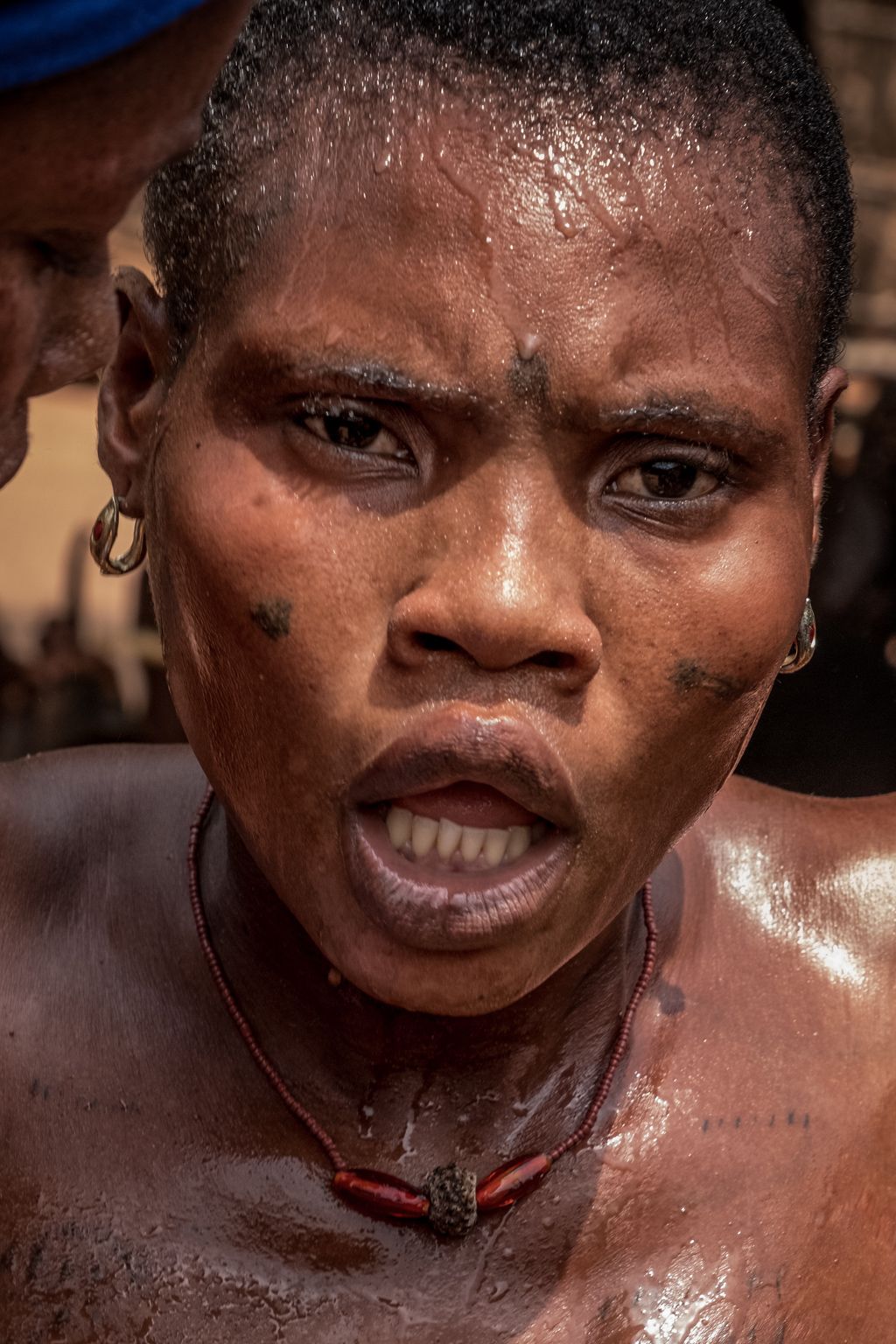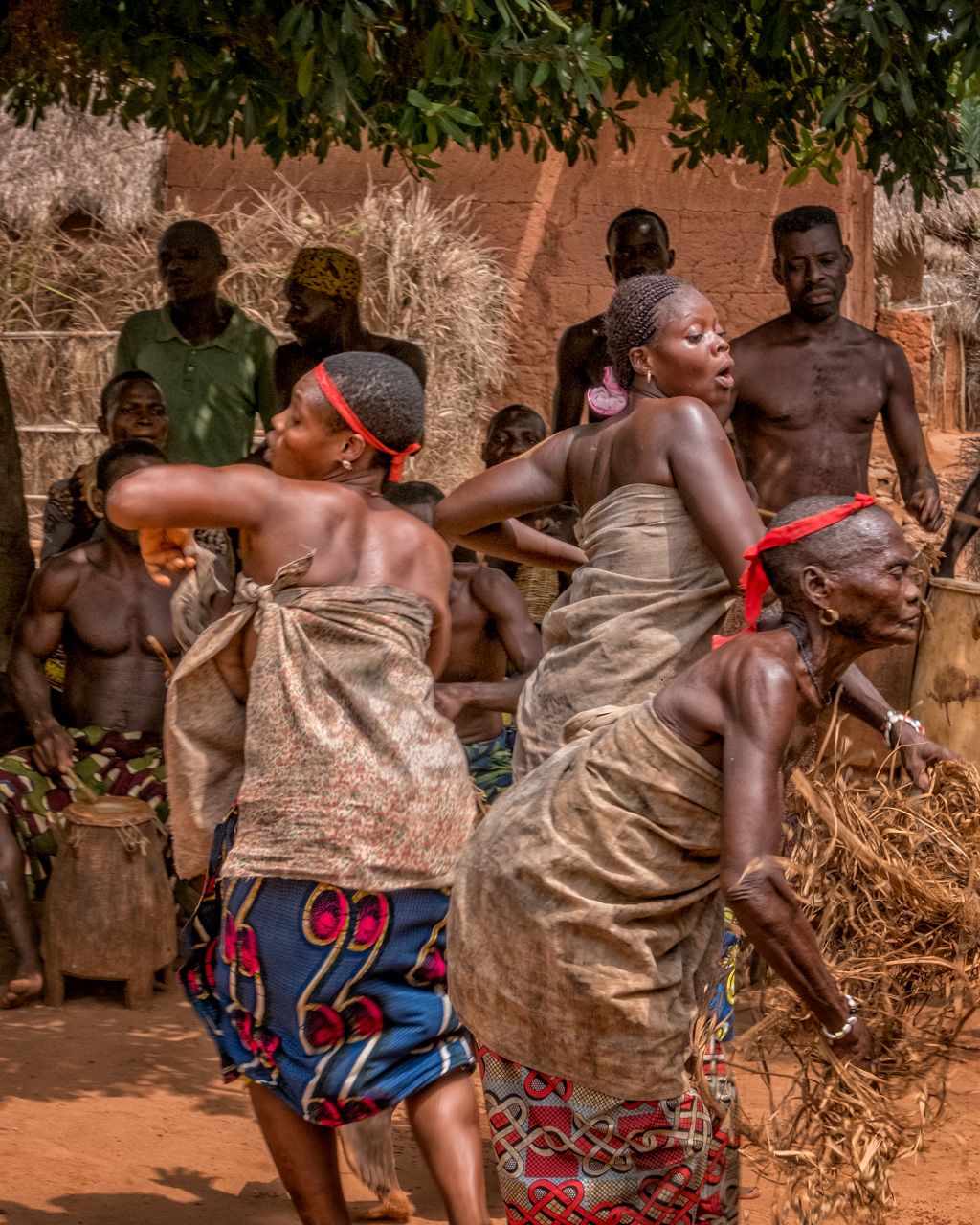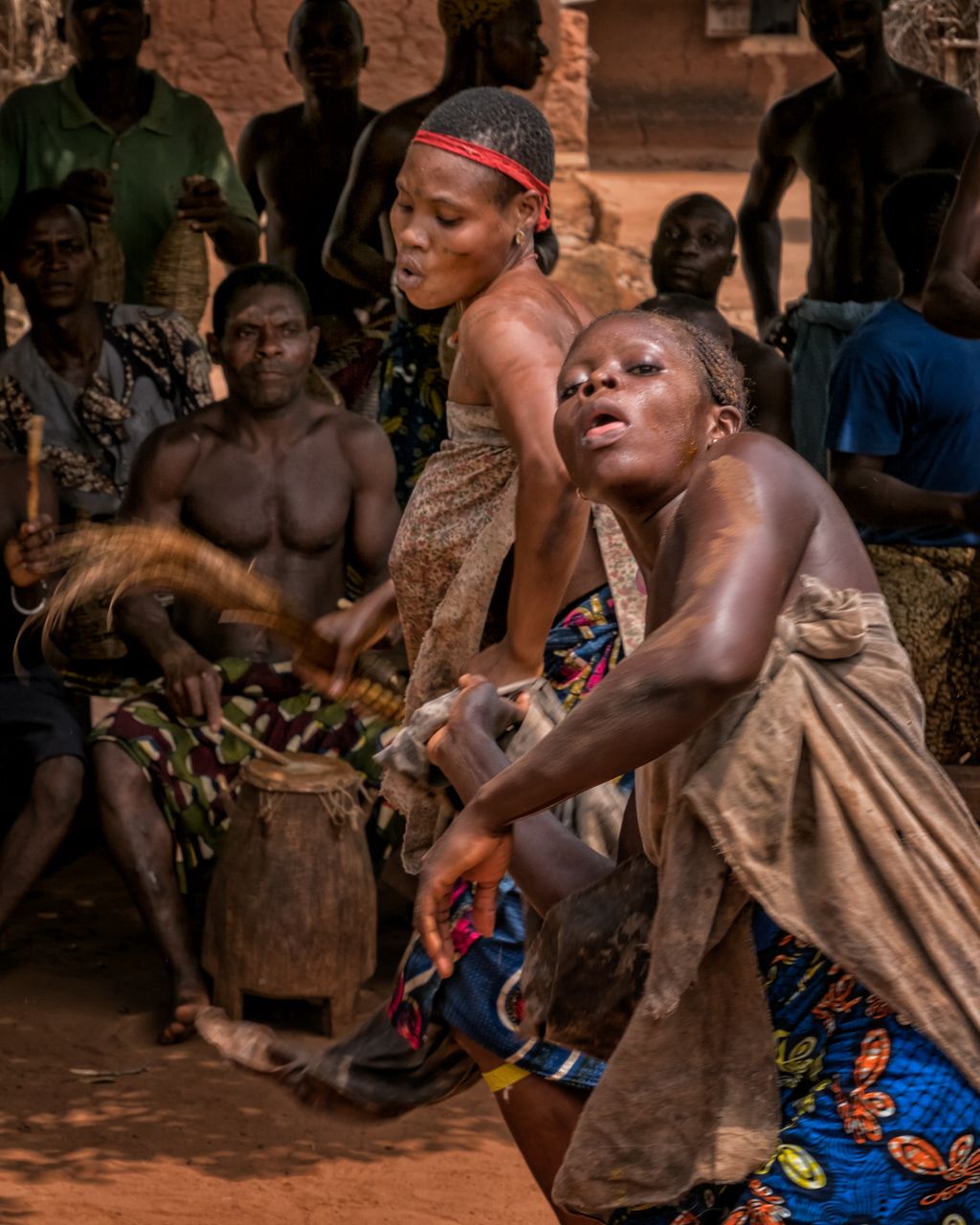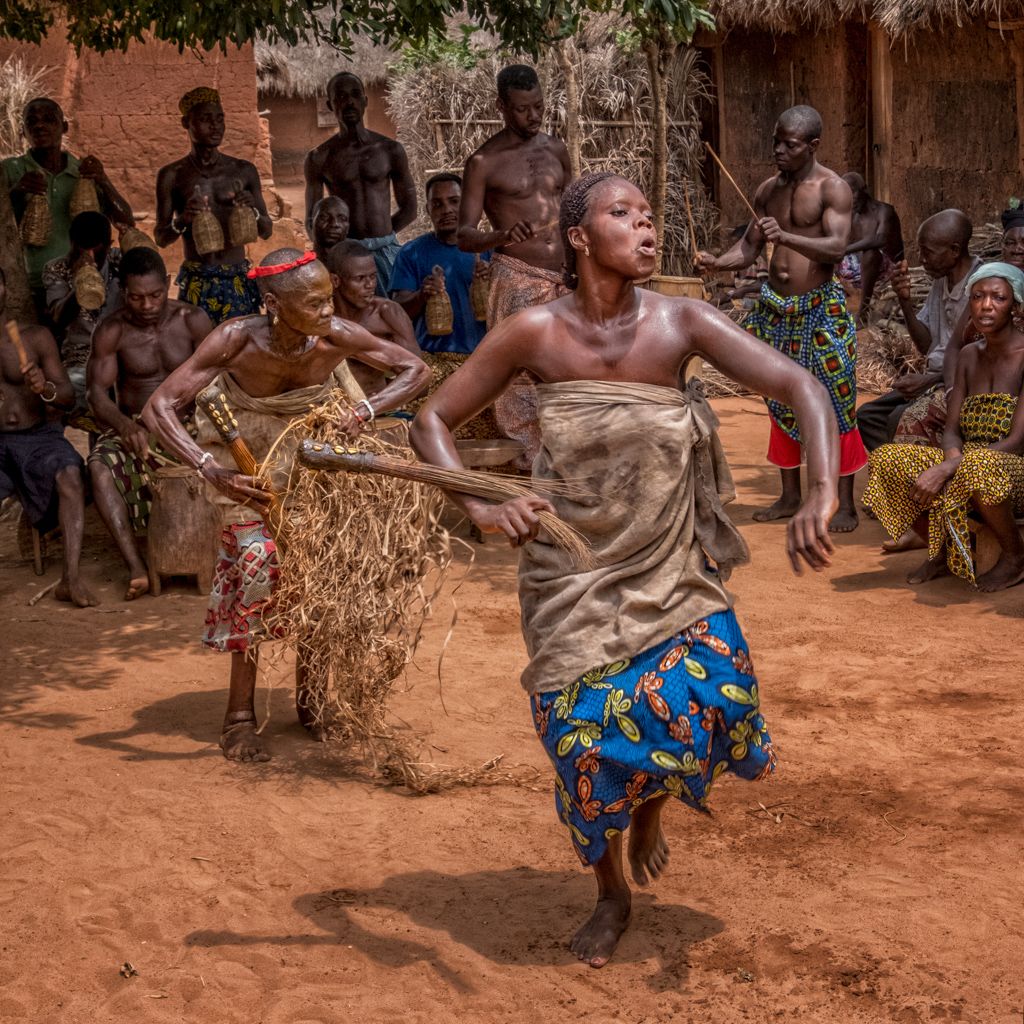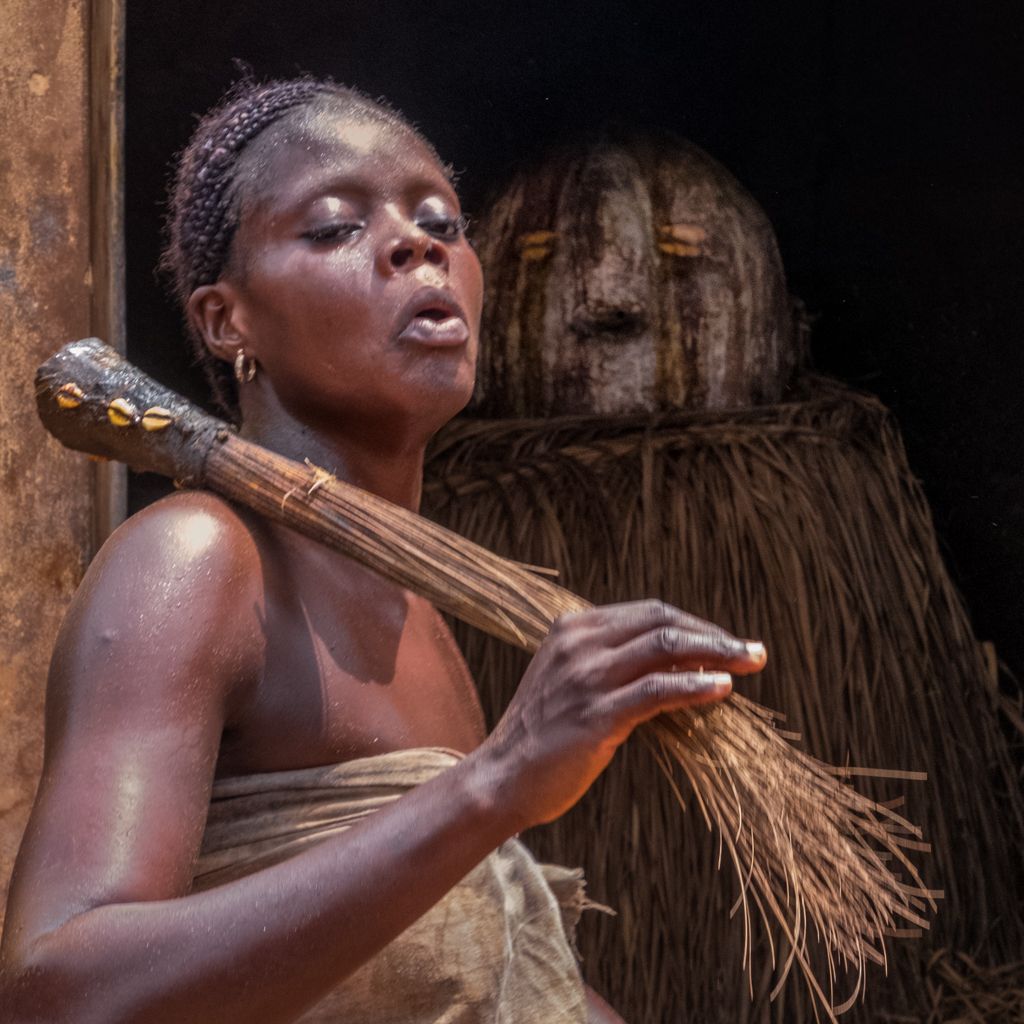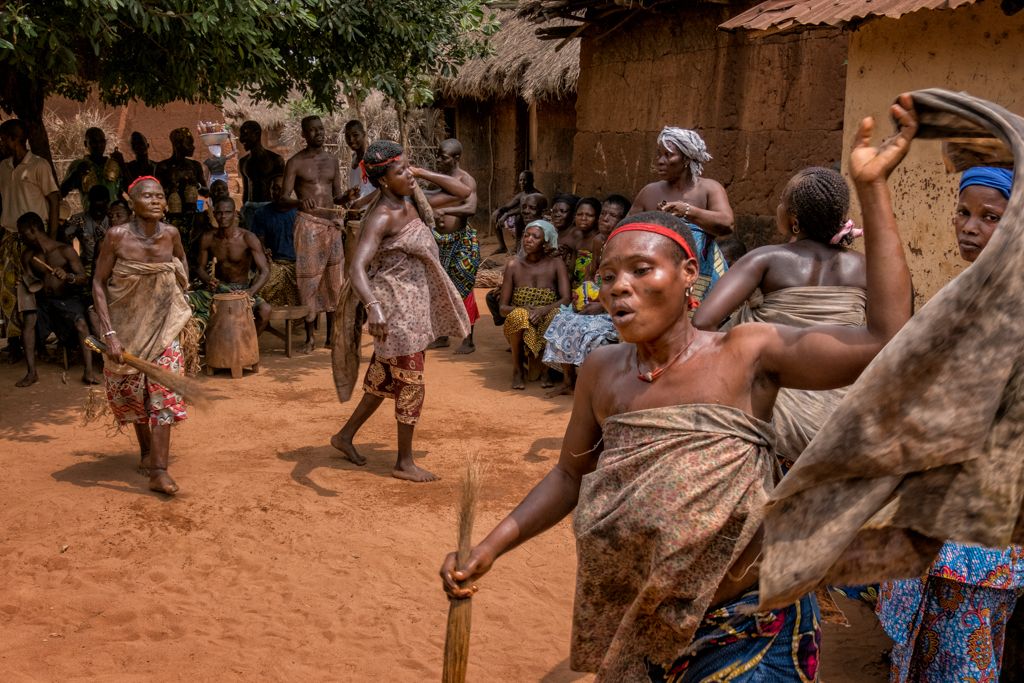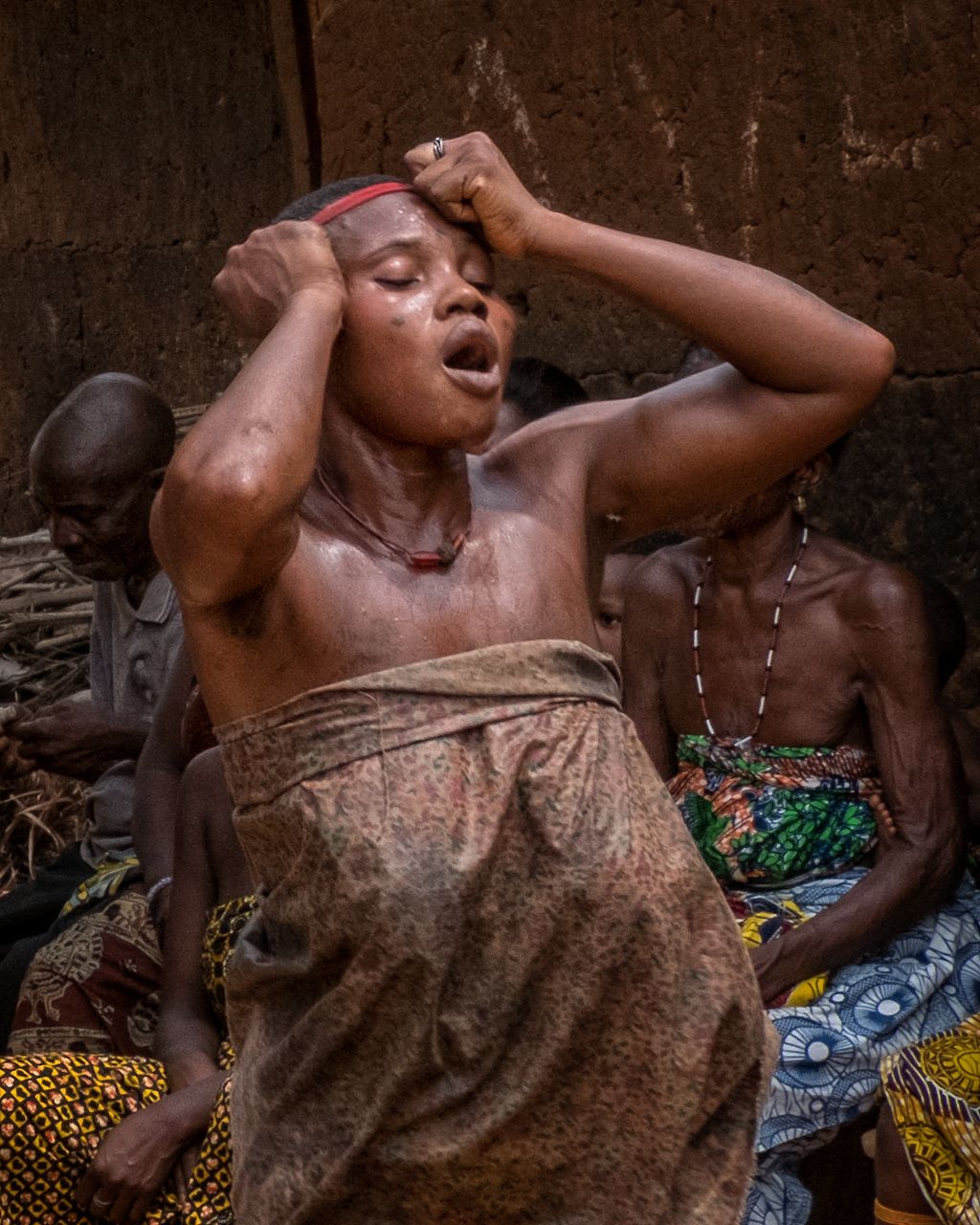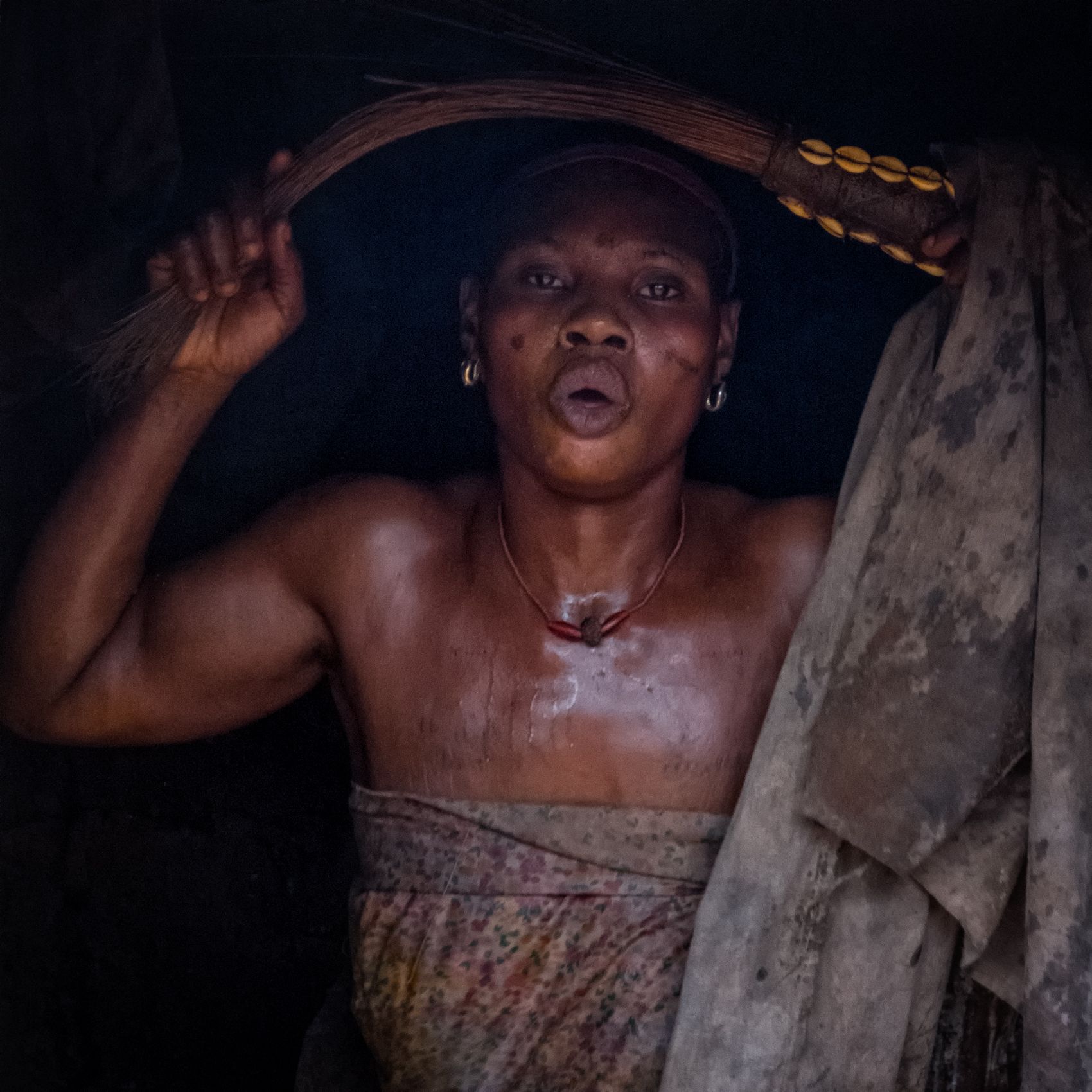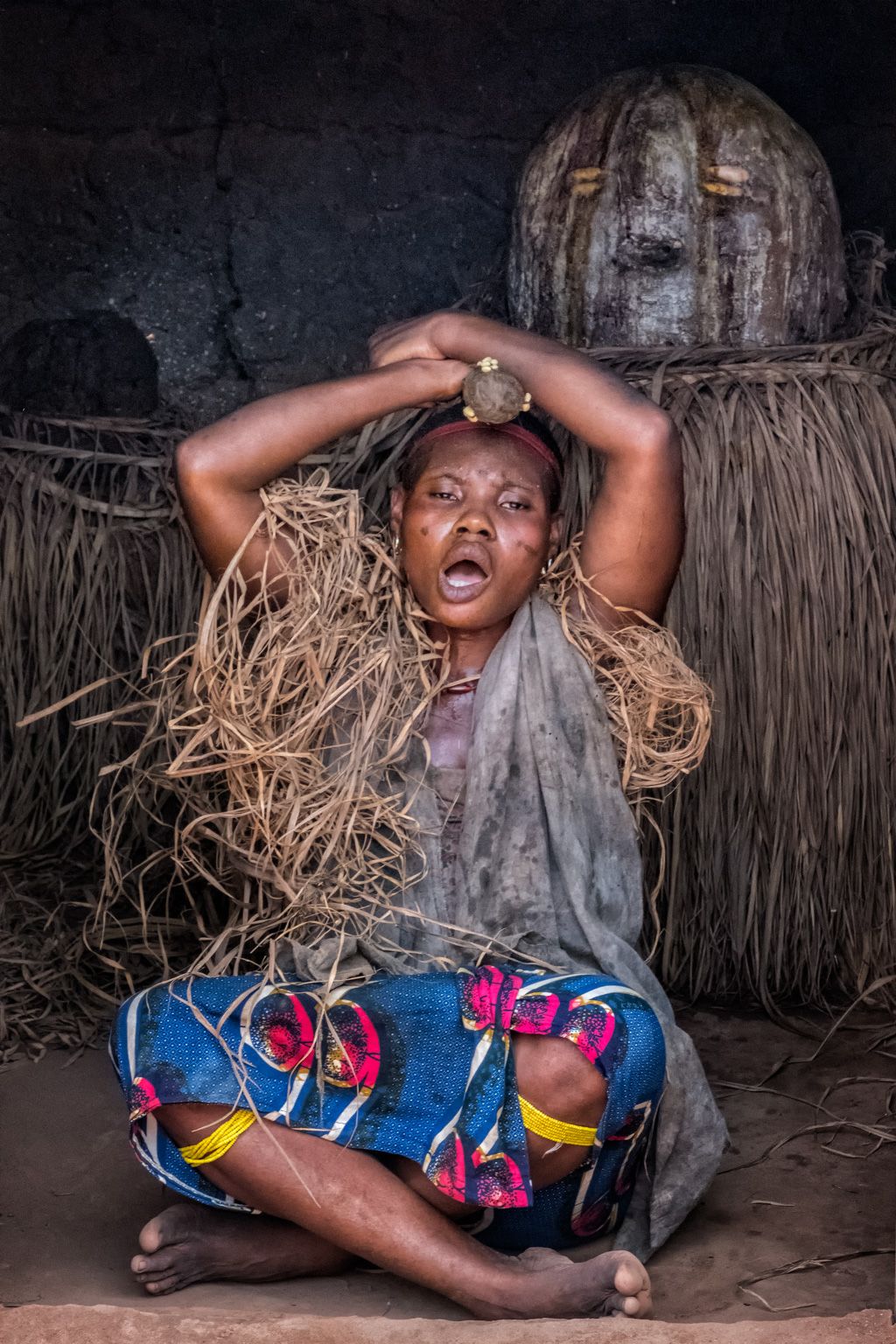TOGO & GHANA: Spirits of Voudon I—Dance & Trance
The title I’ve given to this pair of photo essays is redundant: Voudon—or voodoo, as it is known in some of its New World variants—apparently takes its name from the word for “spirit” in the language of the Ewe and Fon peoples who inhabit areas of what today are Ghana, Togo and Benin. This part of equatorial West Africa, the primary source of the New World’s slaves, was also the cradle of the spiritual beliefs and practices that the enslaved ancestors of these peoples brought with them to the Americas. Voudon is still very much a living religion for millions of West Africans; and millions more who are nominally Catholic or Muslim continue to mix elements of these animistic traditions into their religious practice. The popular western caricature of voodoo as a kind of malevolent magic or witchcraft (a crude conflation of Voudon with the occult practice of Bo or Juju) had its origins in a racist and colonialist discourse that sought to demonize the indigenous beliefs that gave strength and sustenance (and resistance) to the exploited and enslaved peoples of West Africa, Brazil and the Caribbean. Voudon is a complex of beliefs and practices with many local and historical variants but central is the saturation of the world with spiritual powers and forces. In such a world, everything has a cause and all things are linked. Voudon is best grasped not a matter of abstract belief or systematic theology but rather as an intense lived experience. As the oft repeated West African aphorism puts it, white people go to their churches to speak about god but we go to our shrines and become god. The spirit world has a profound immediacy and accessibility within Voudon, including the gods controlling the great forces of nature, the spirits within every animal, stream, tree, or stone, and the ancestral spirits of the tribe, clan, and family. As in religion more generally, belief and practice work to give meaning and order to experience, to allow believers a measure of control over their lives, and to bind the individual to the community and the living to the dead. These effects are especially evident in the Voudon phenomenon of trance. Collective drumming, chanting and dancing help to evoke the ancestral spirits which, with startling suddenness, can possess certain of the participants, female or male. When this happens, the possessed may fall to the ground or bolt with great strength and vigor in seemingly random directions, dance into exhaustion, continually move back and forth between the sacred hut housing the god and the dancing ground, move around the community grasping the hands of their friends and neighbors; meanwhile, those who have not or not yet been possessed rush to control and protect the possessed, insuring that they do not injure themselves, perhaps giving them water or wiping away their sweat, or changing their clothing inside the hut where the god resides. This ecstatic interaction among the dead and the living, between the possessed and their community, is a powerful and moving demonstration of the etymology of “religion” as a binding together. The images in this portfolio were made in two villages: Adidome, in the Volta region of eastern Ghana, and Amenoudzi Kope in Togo.

